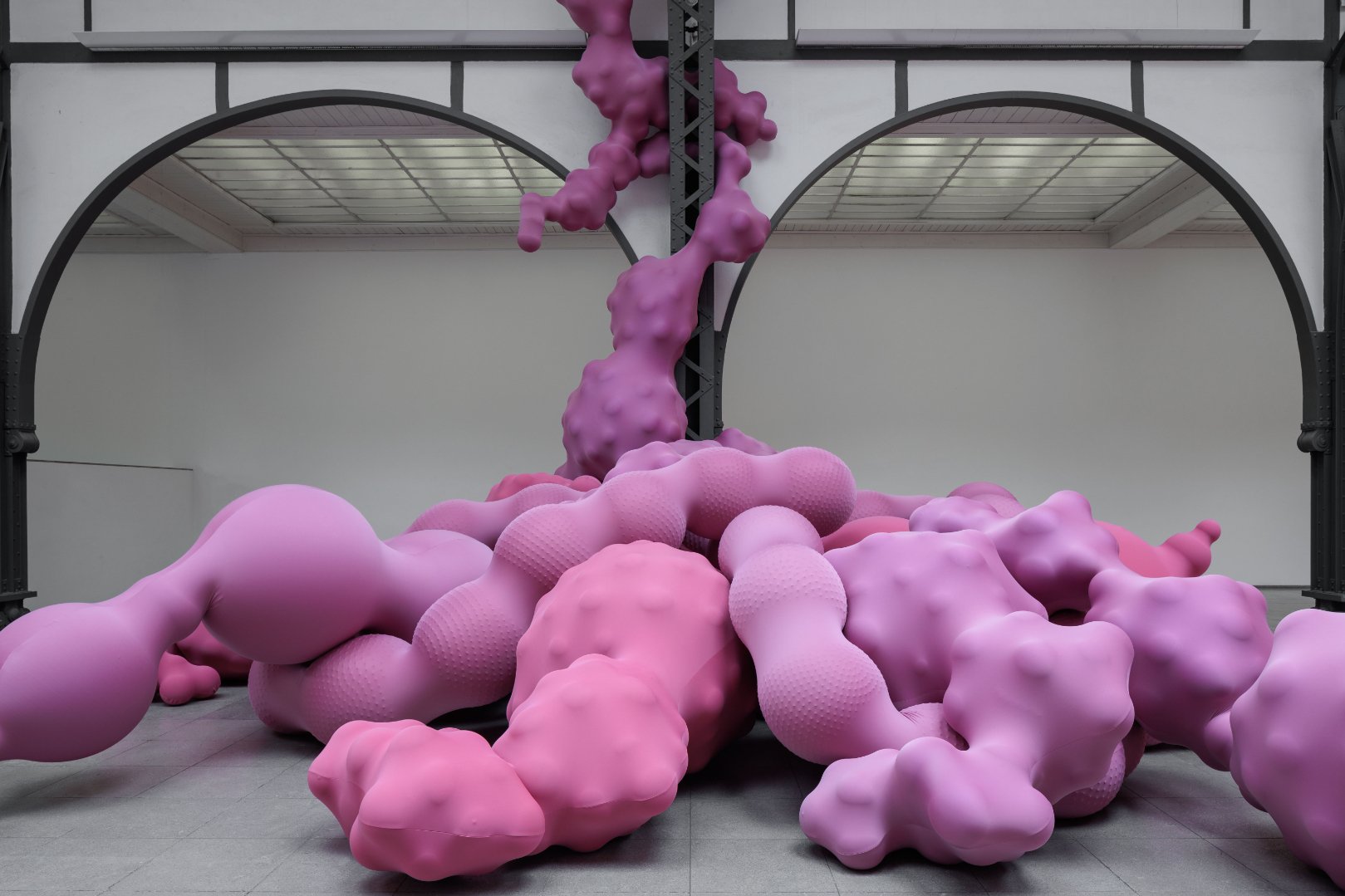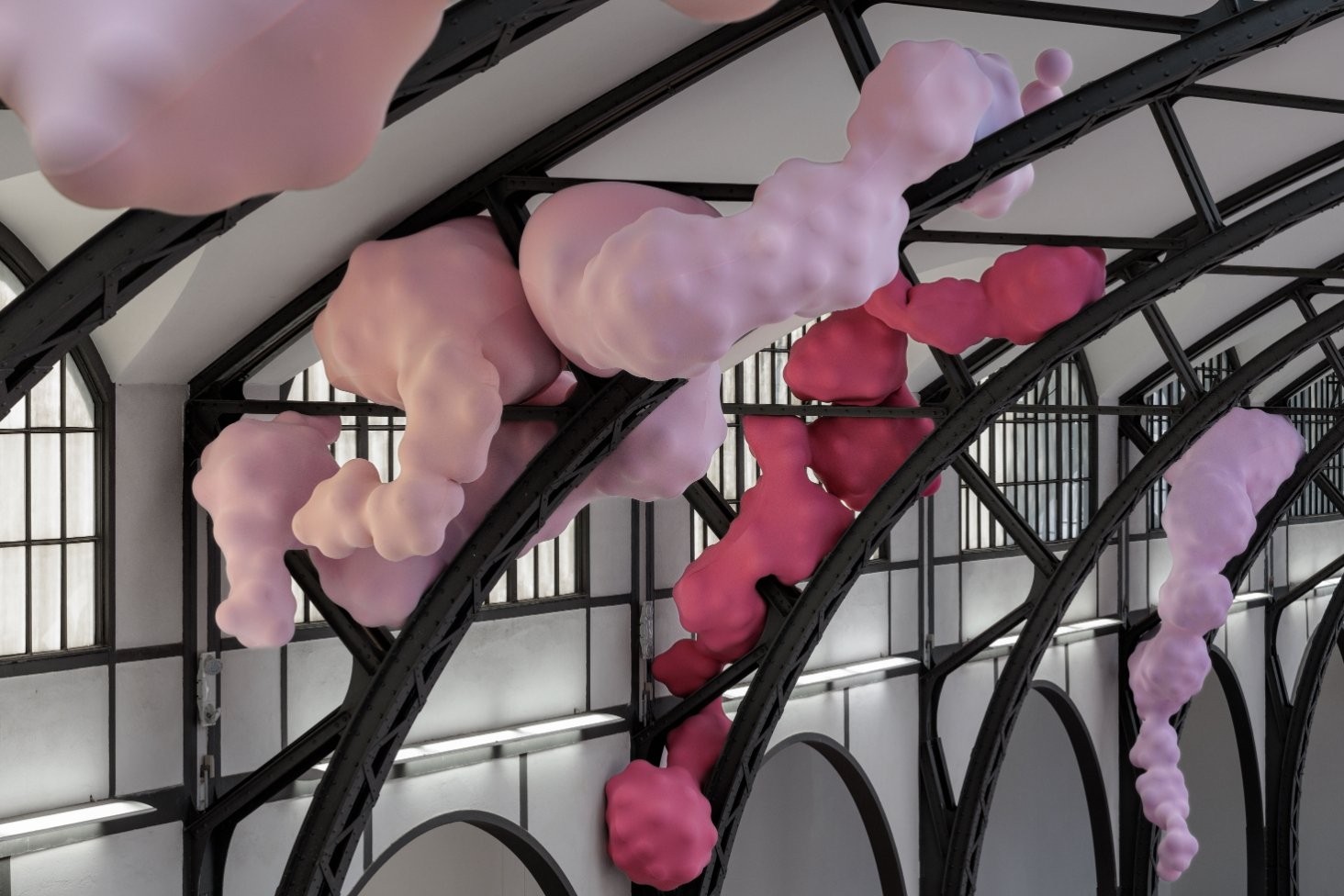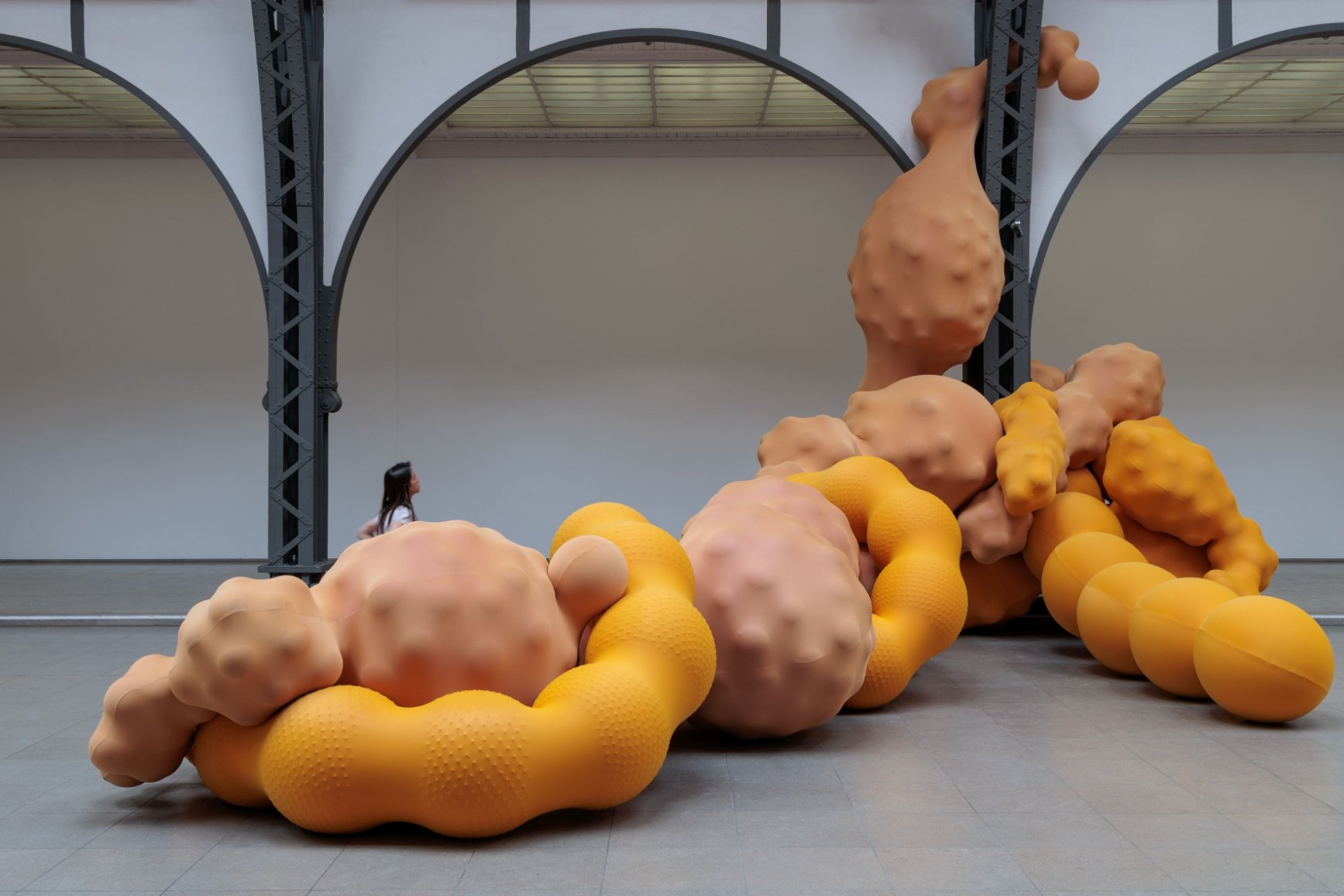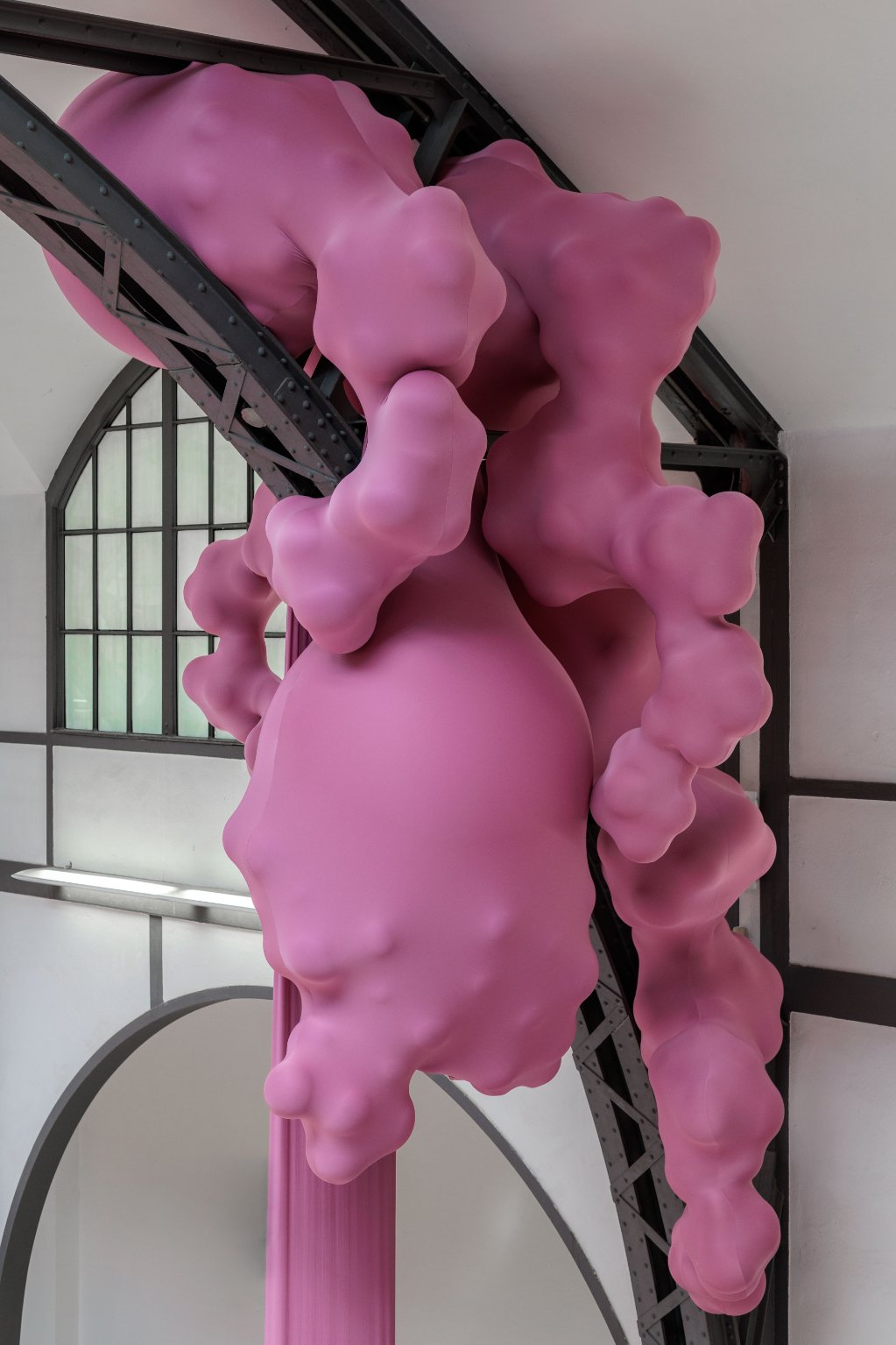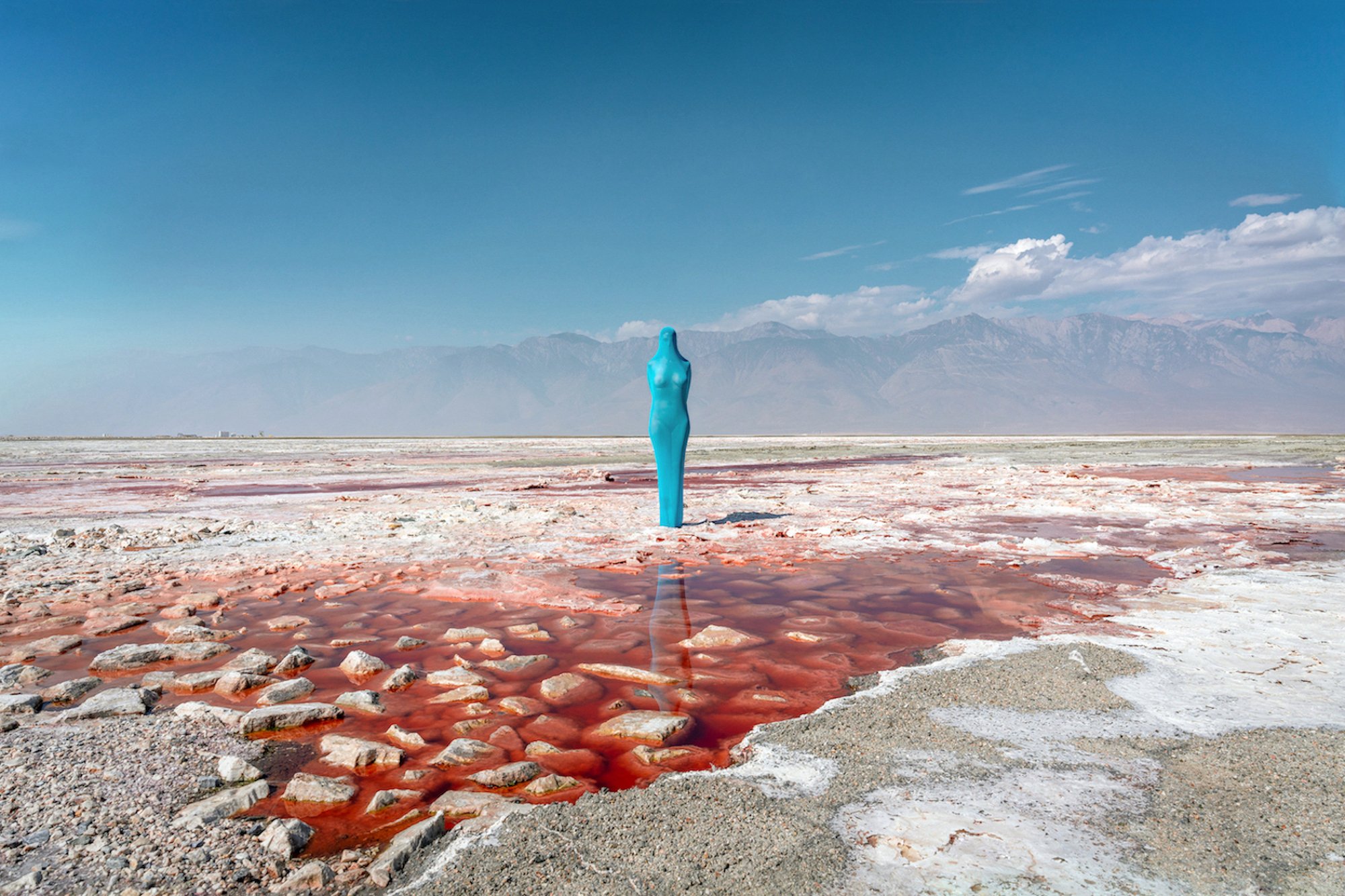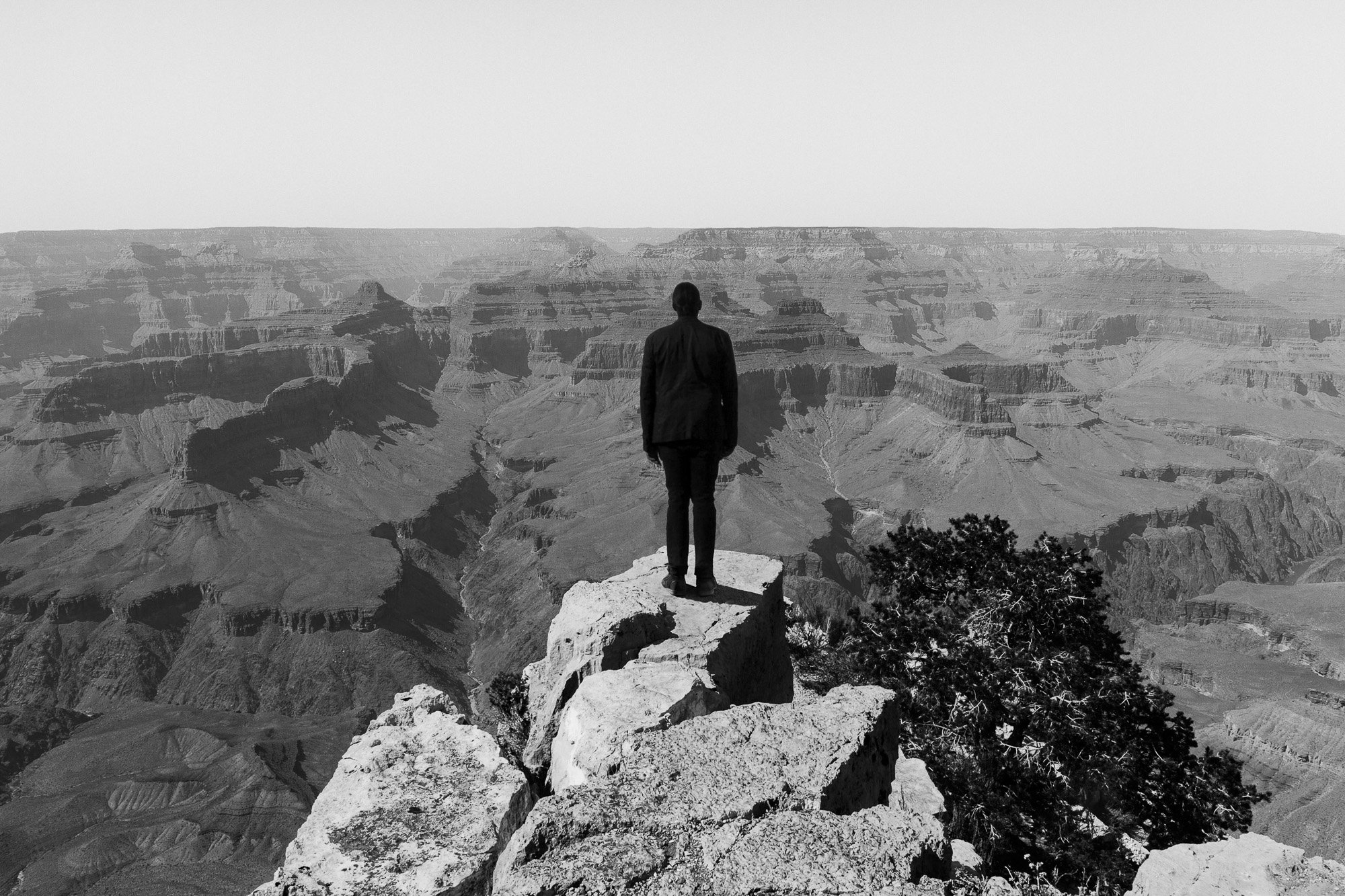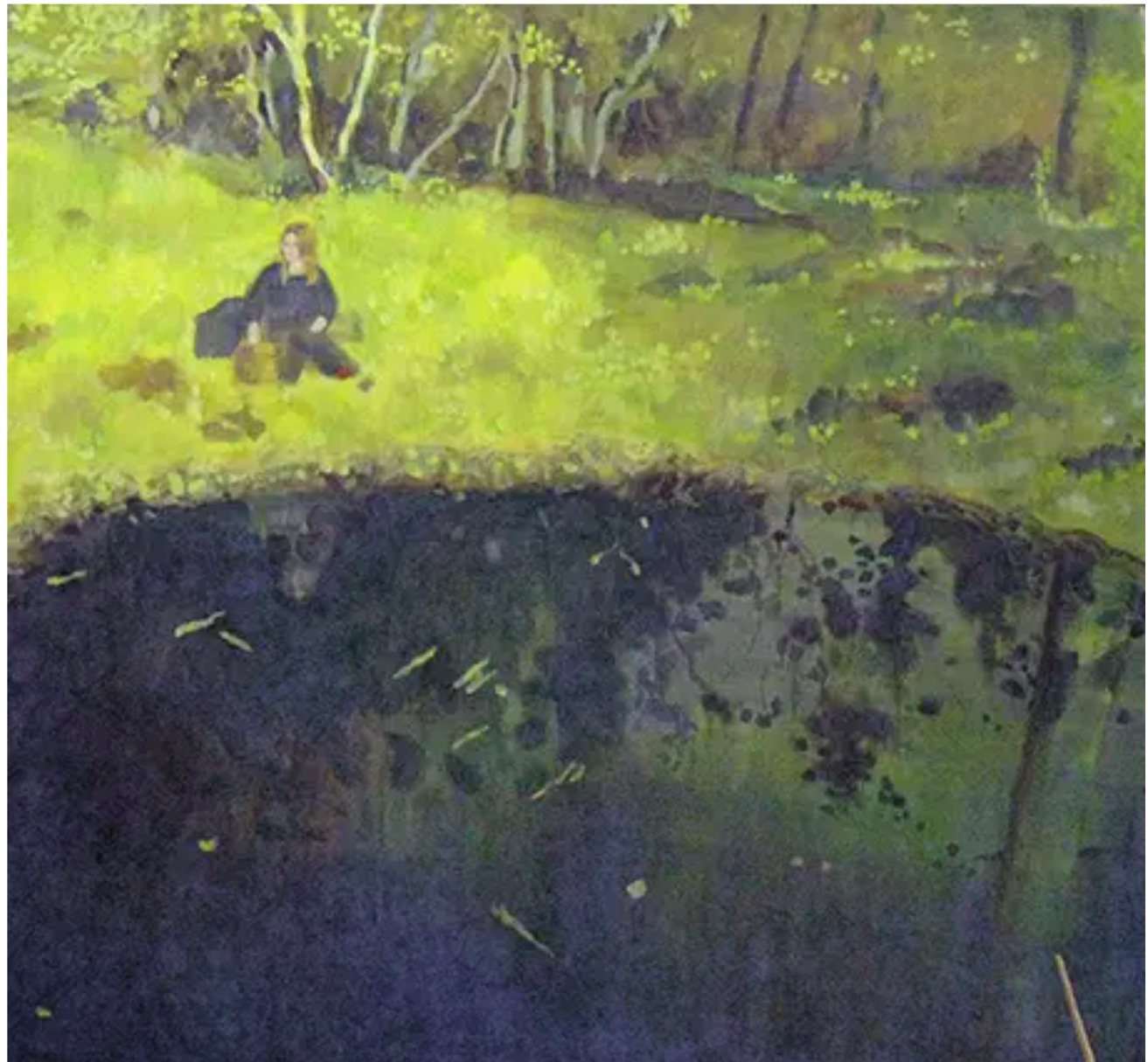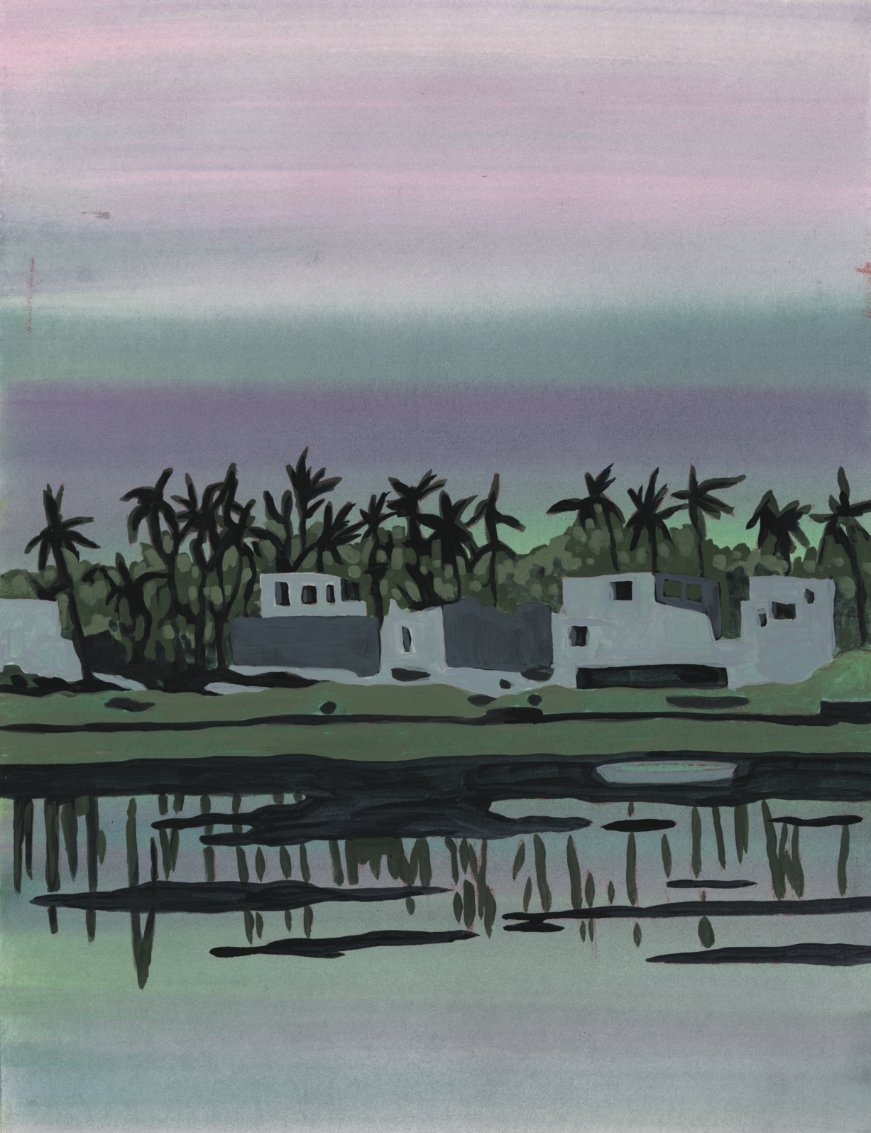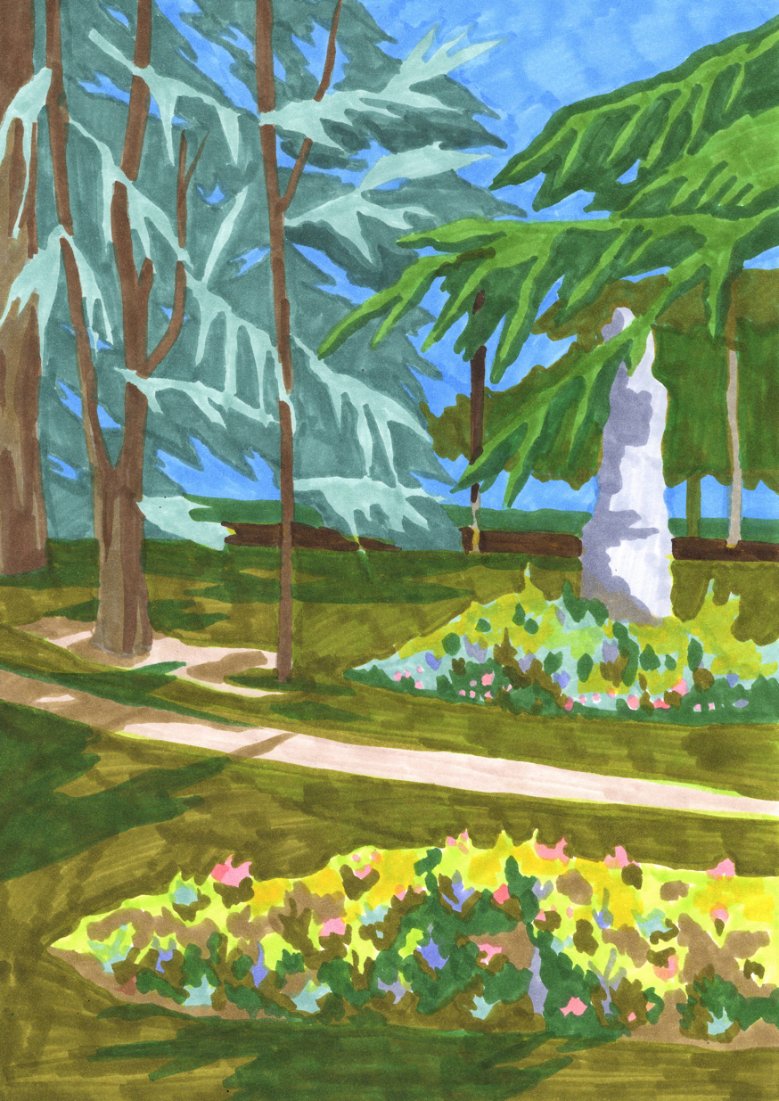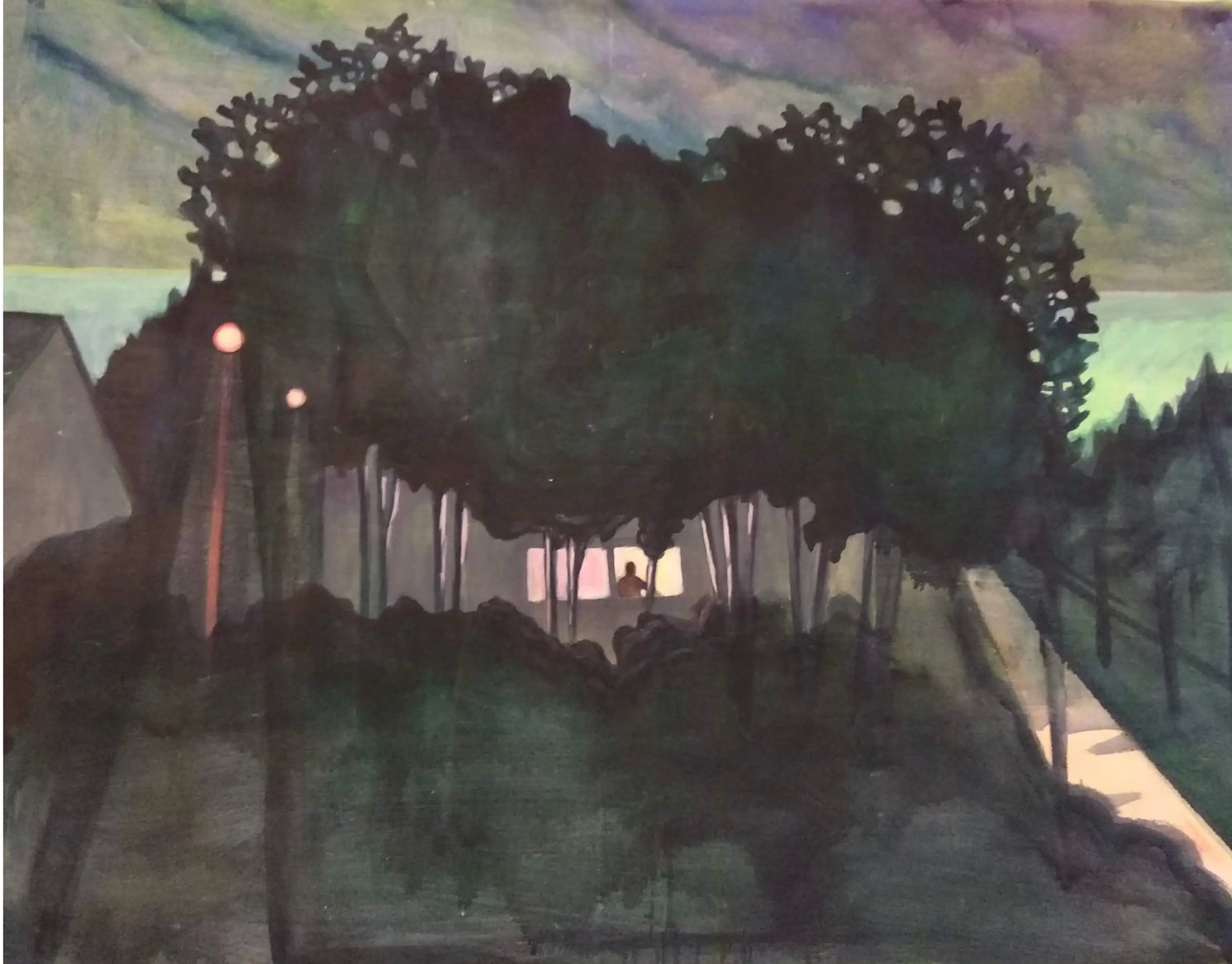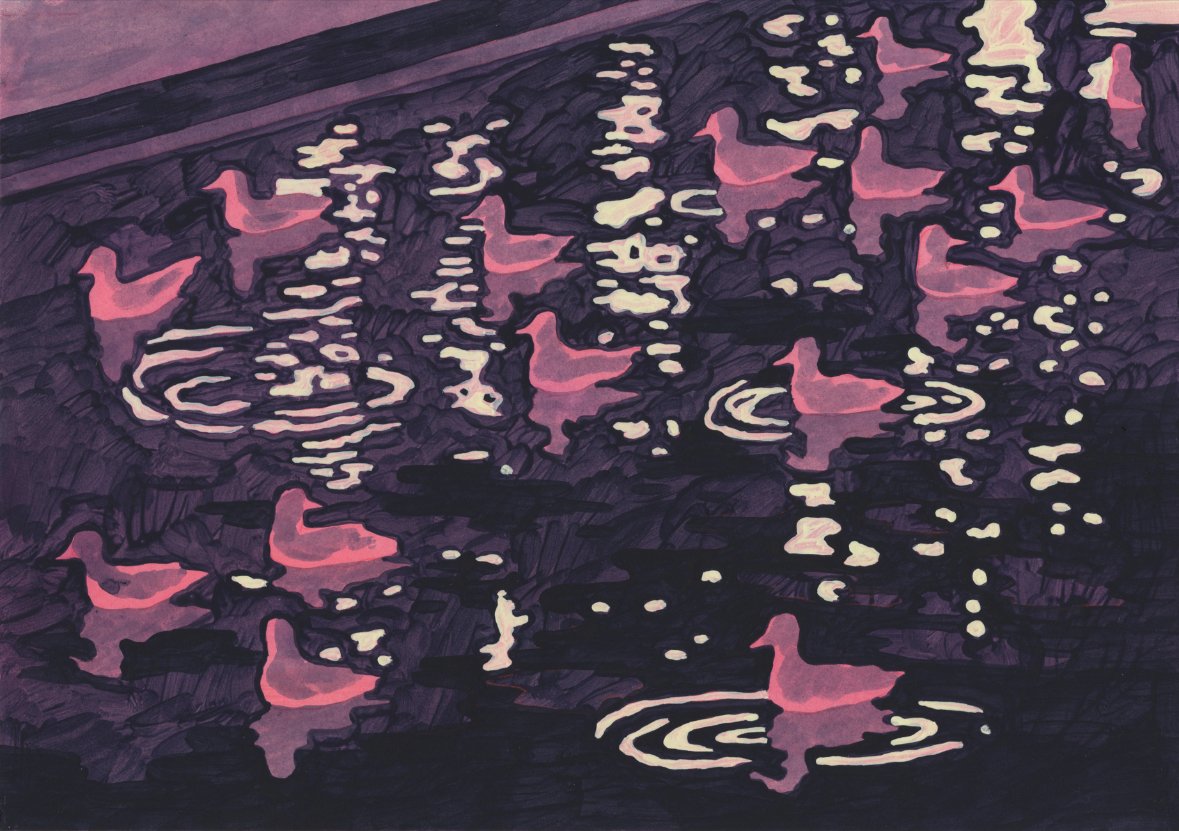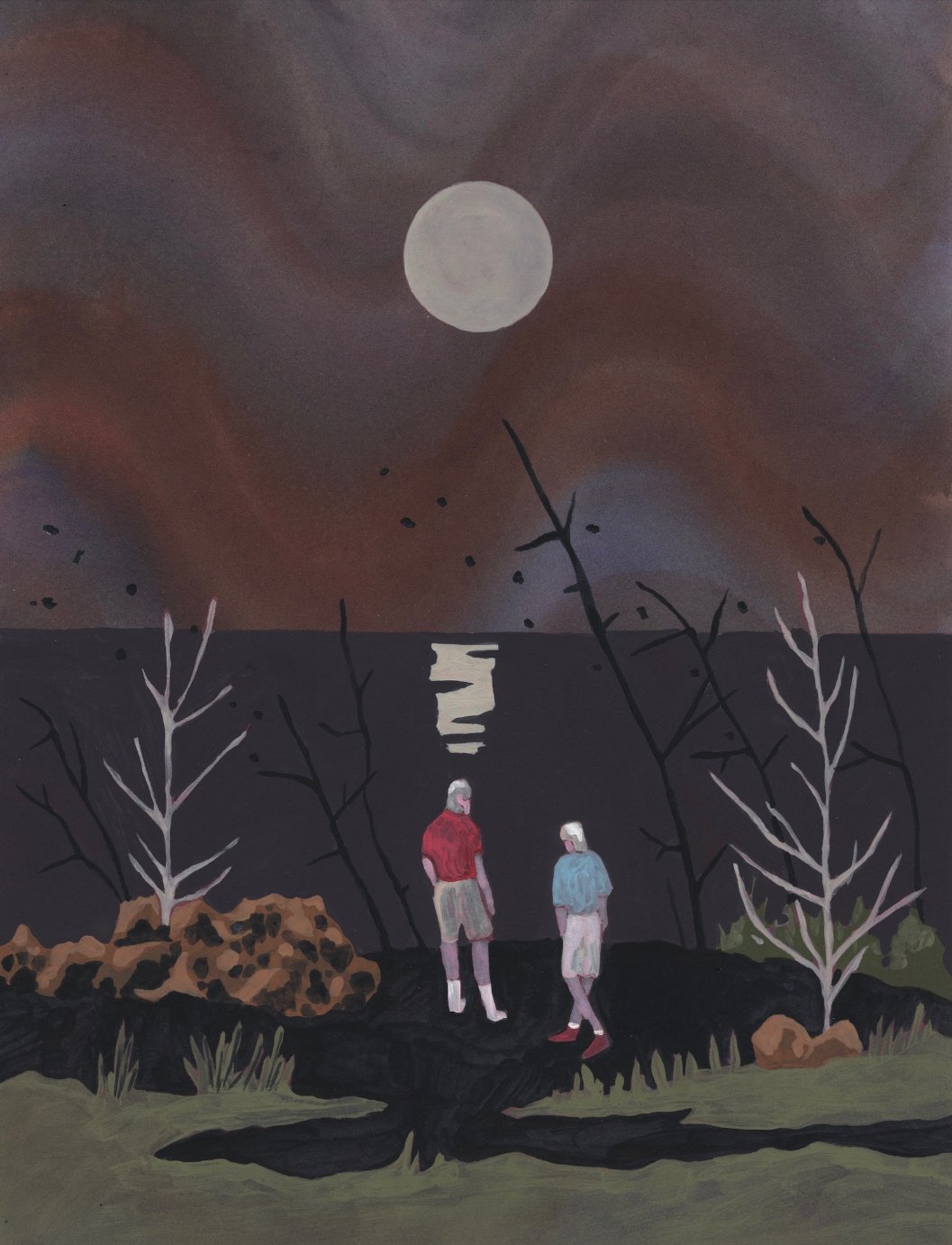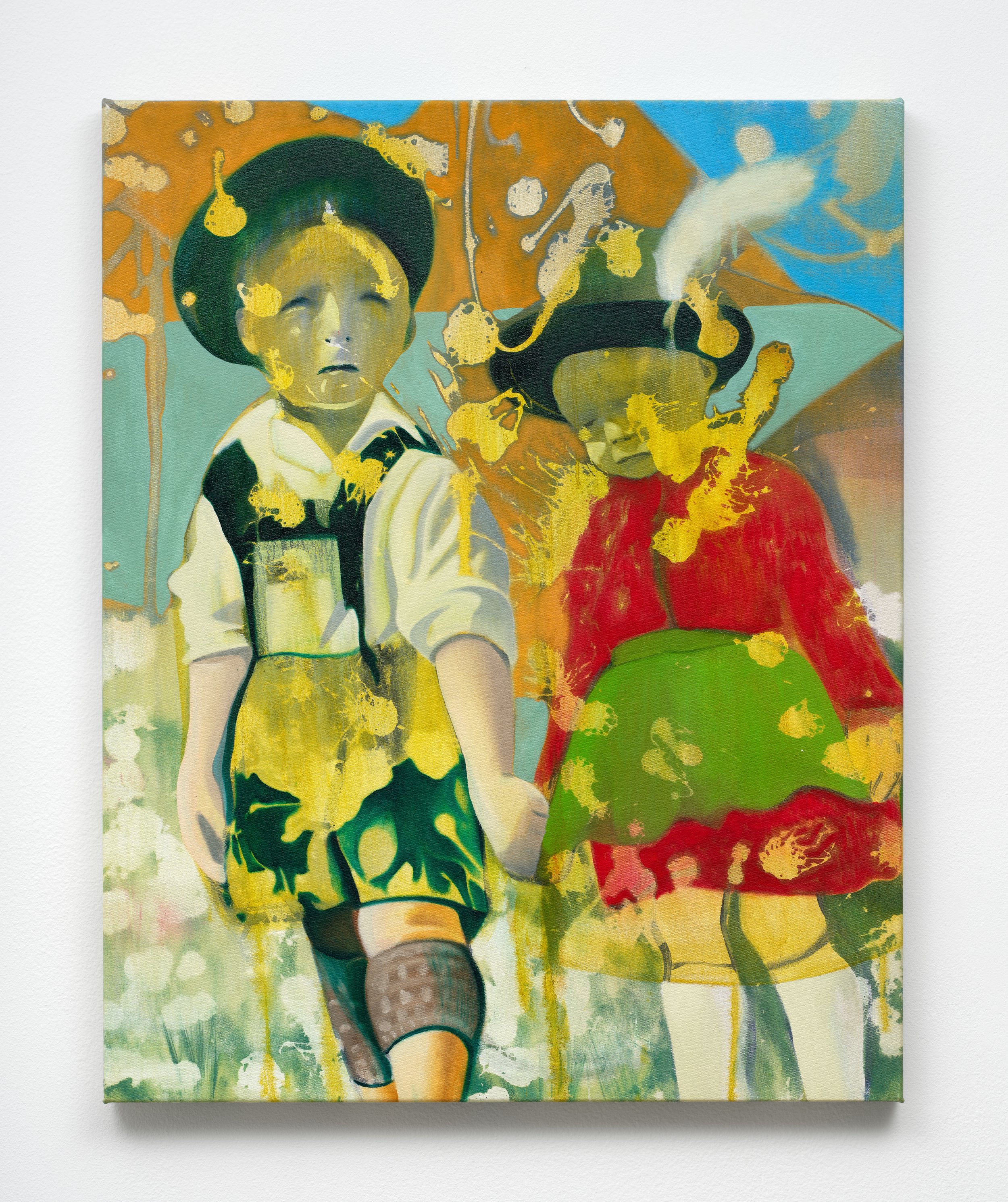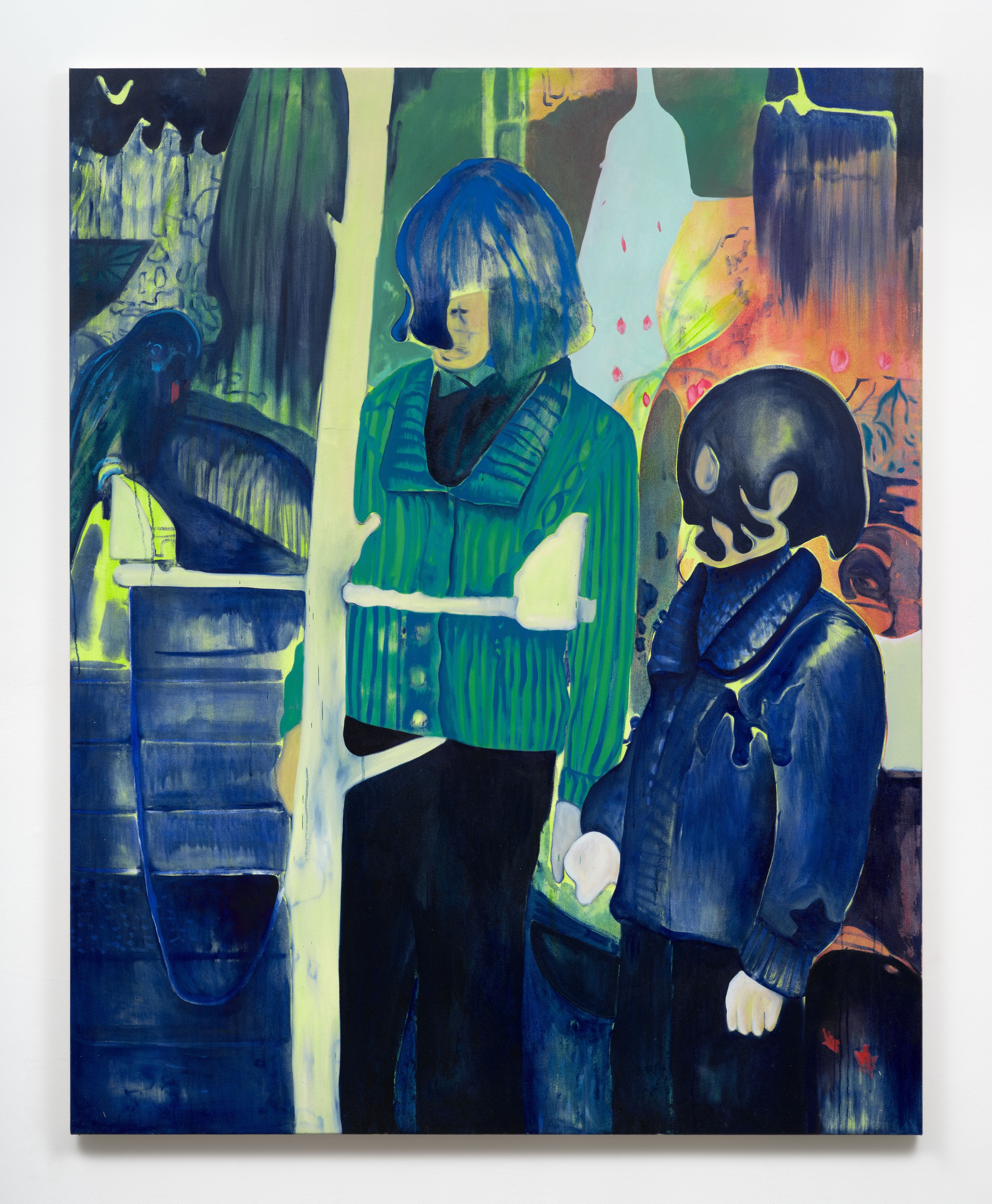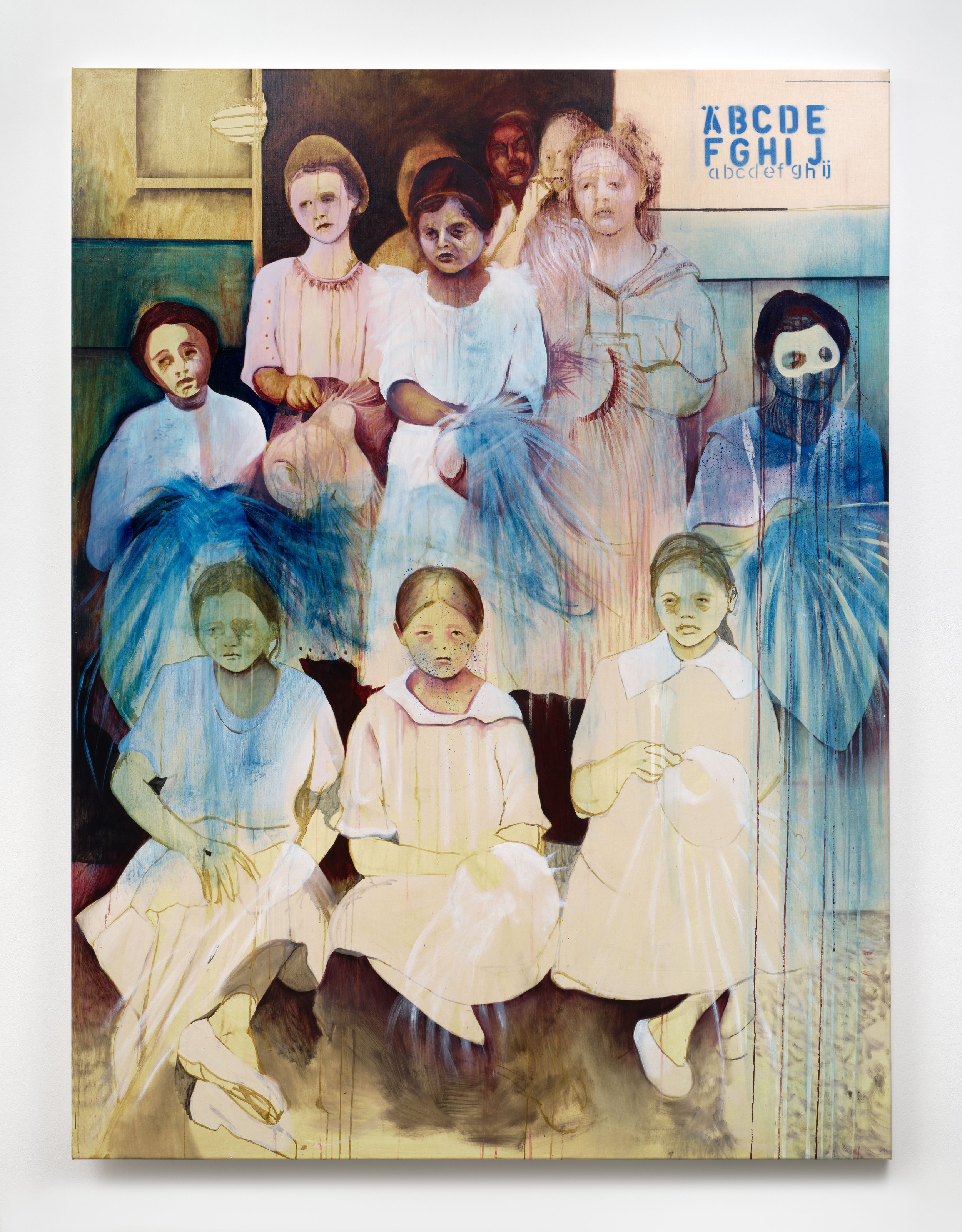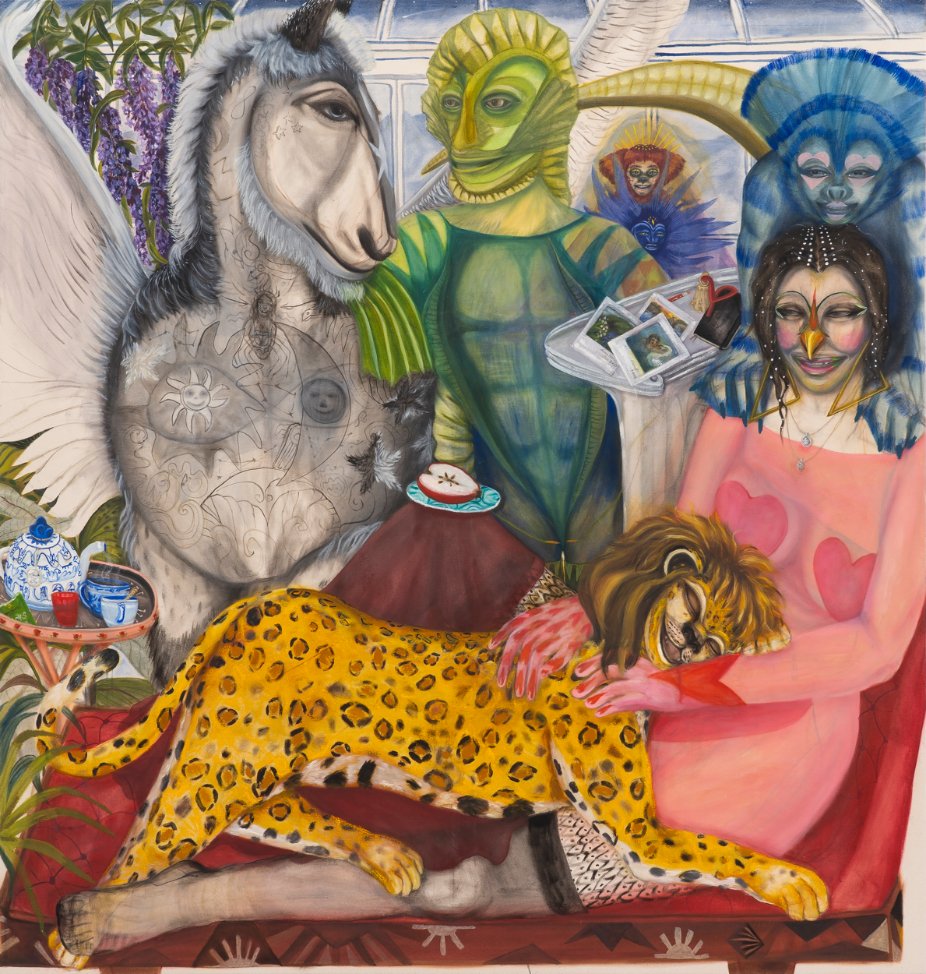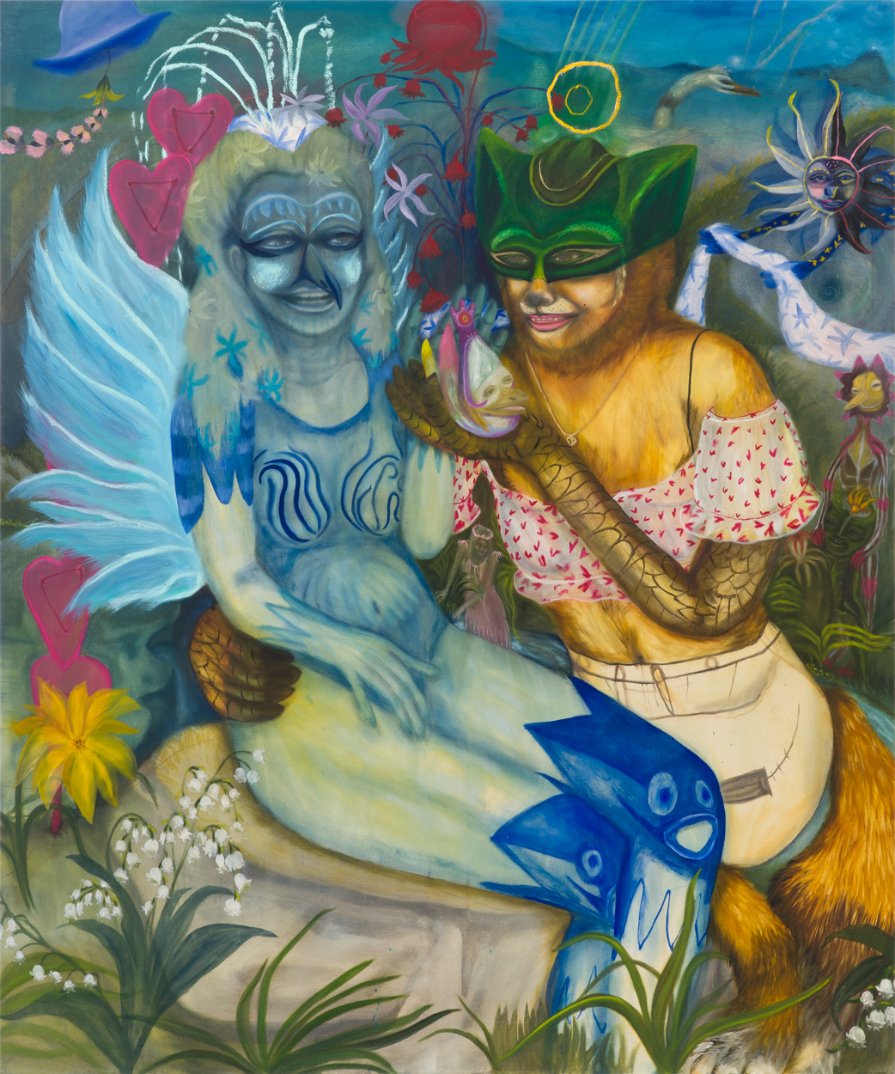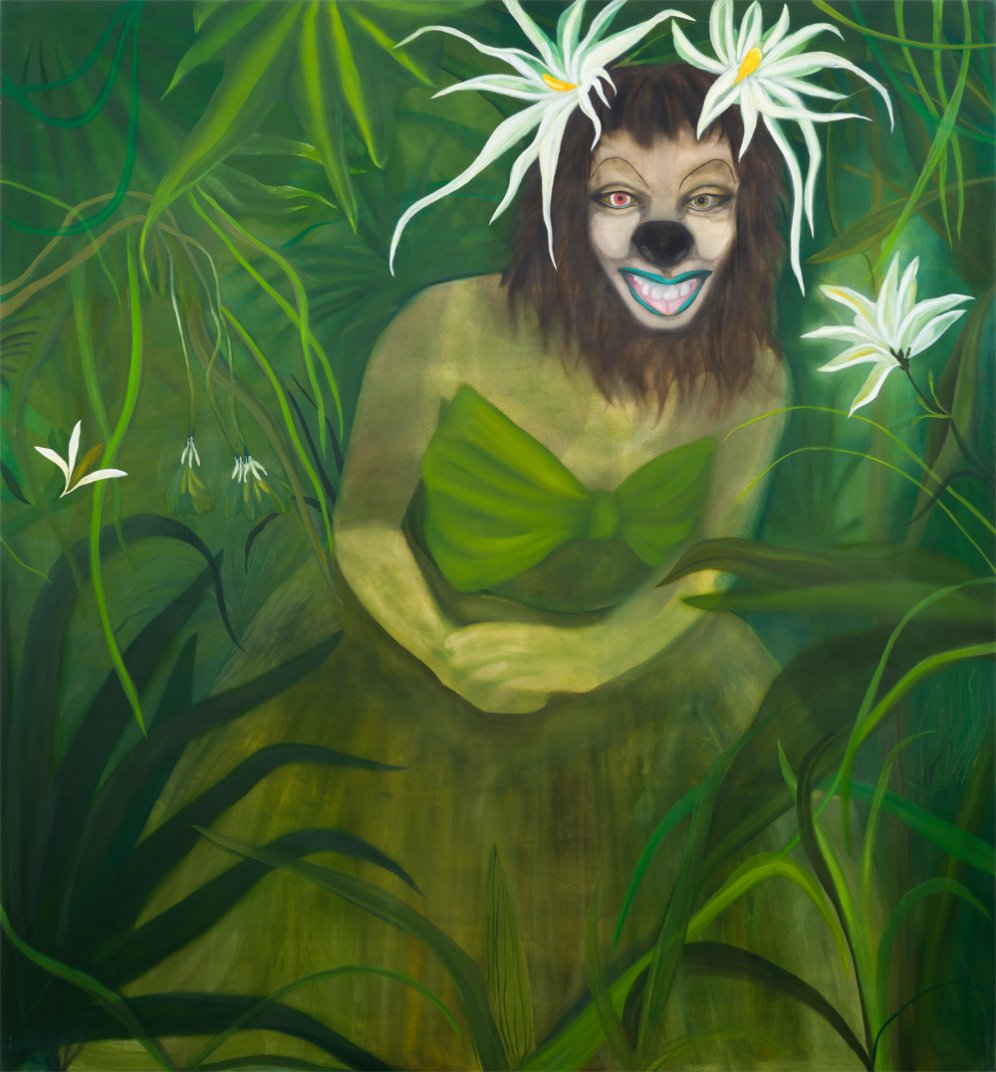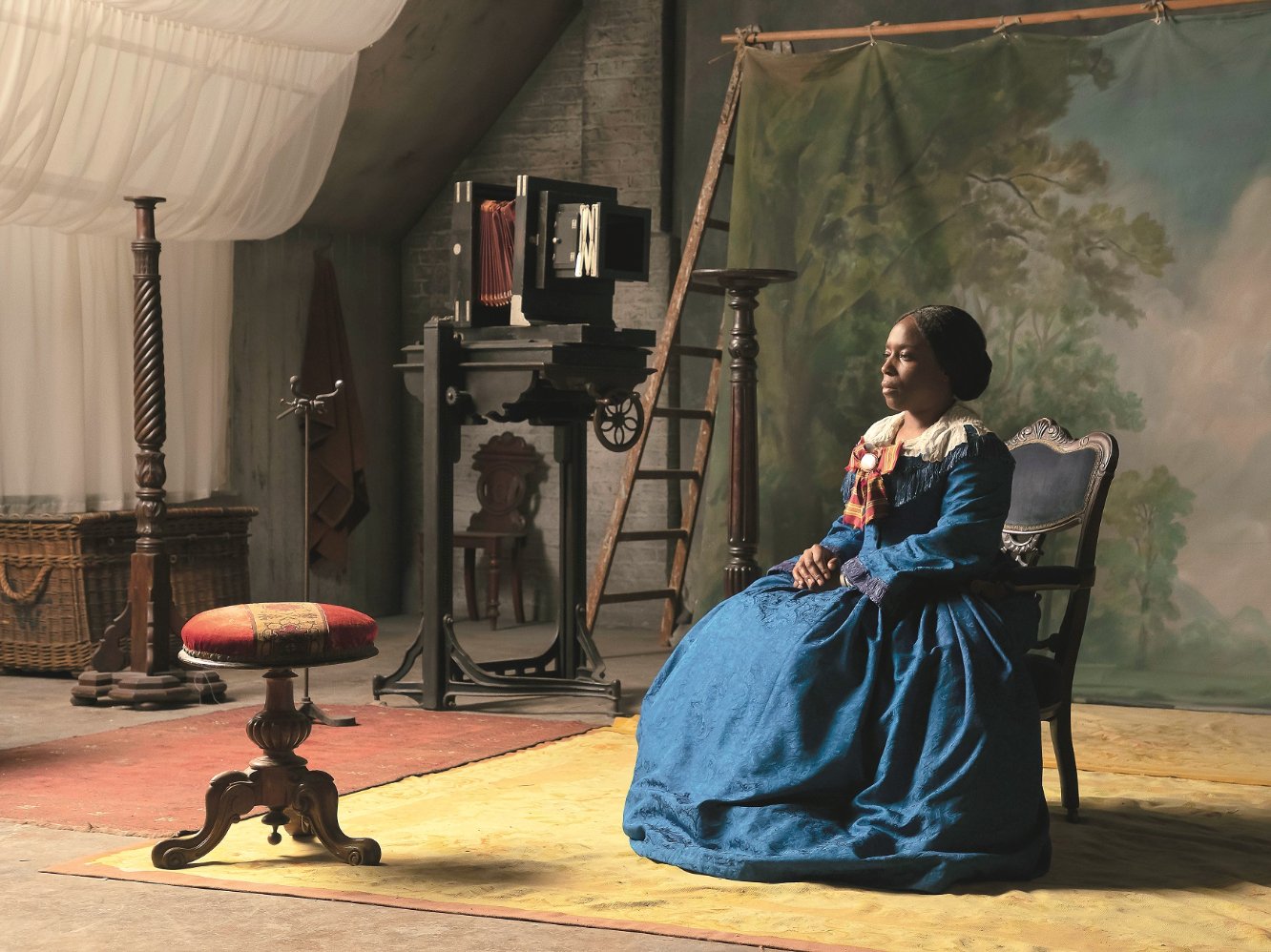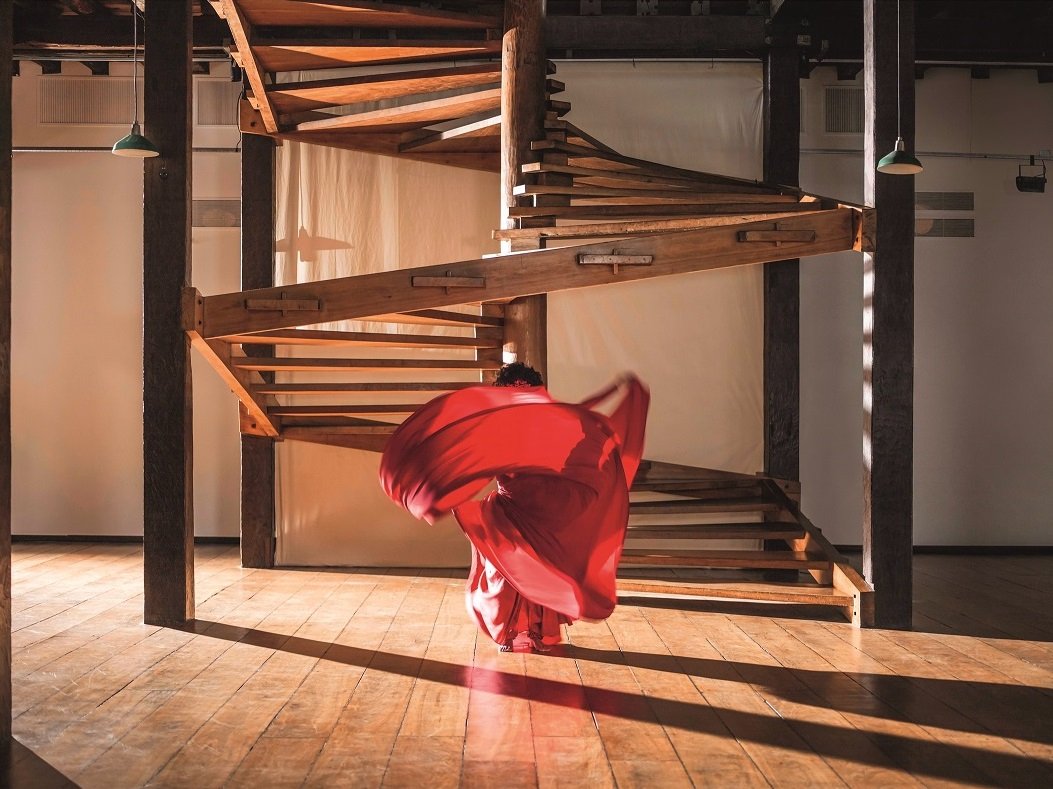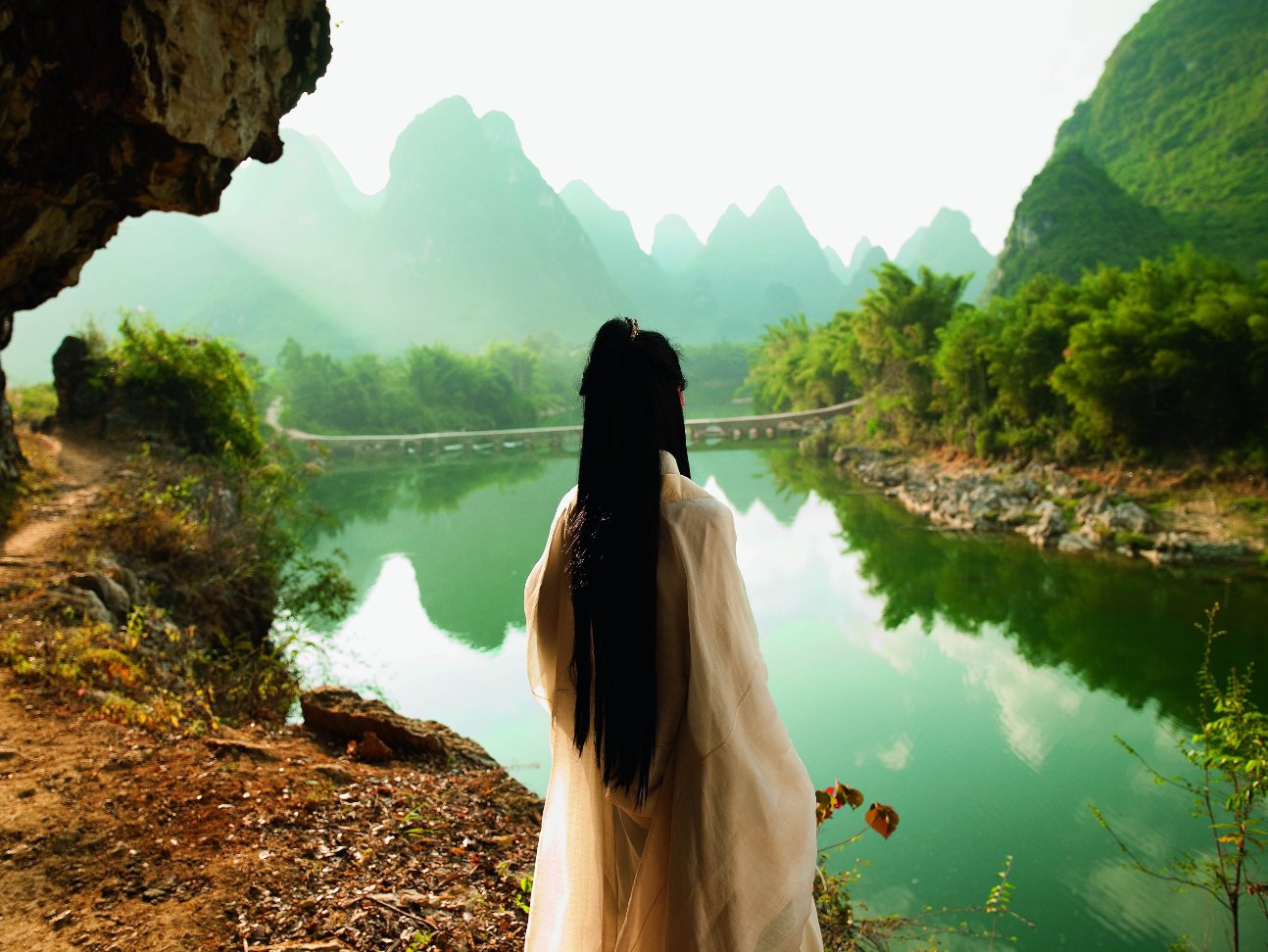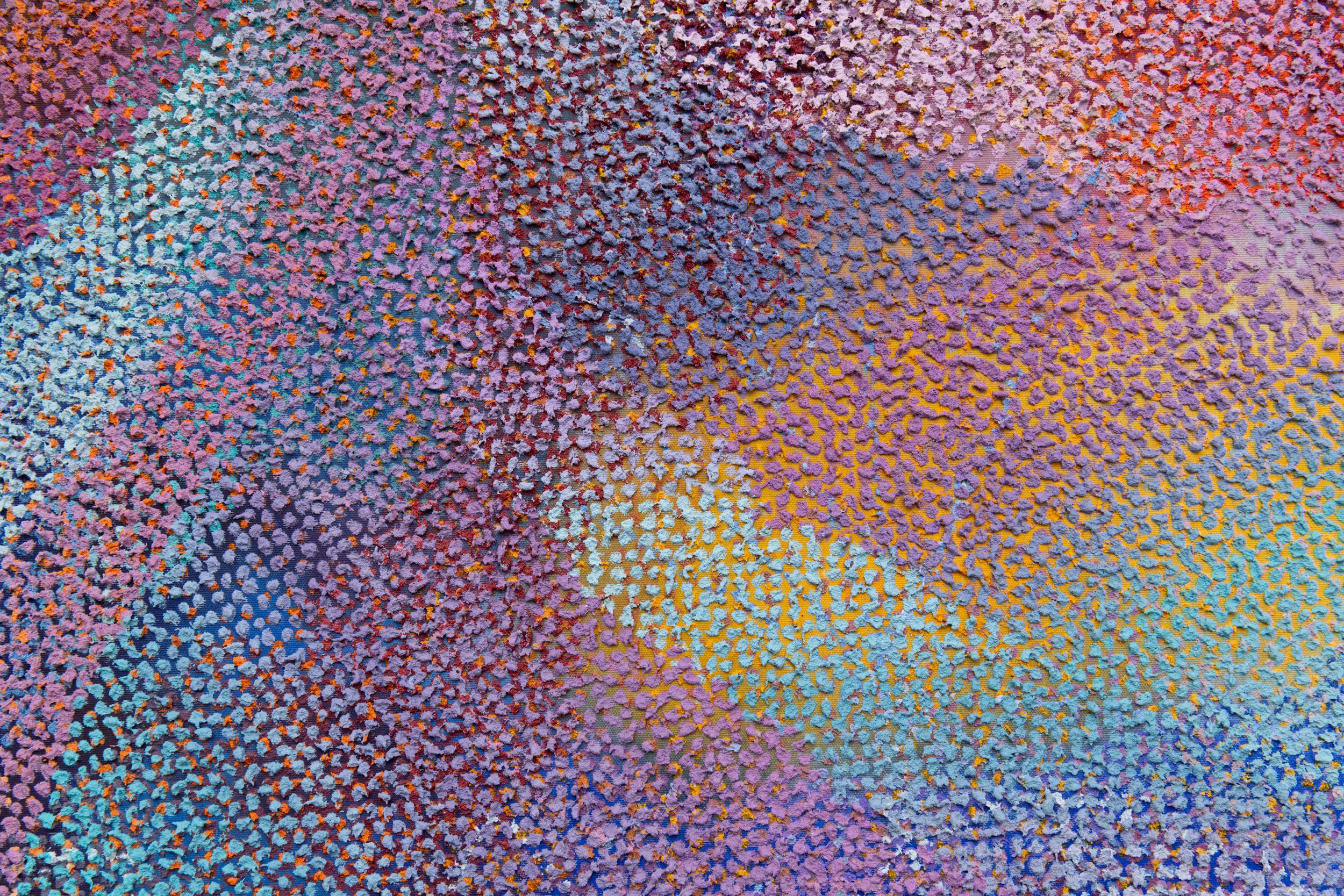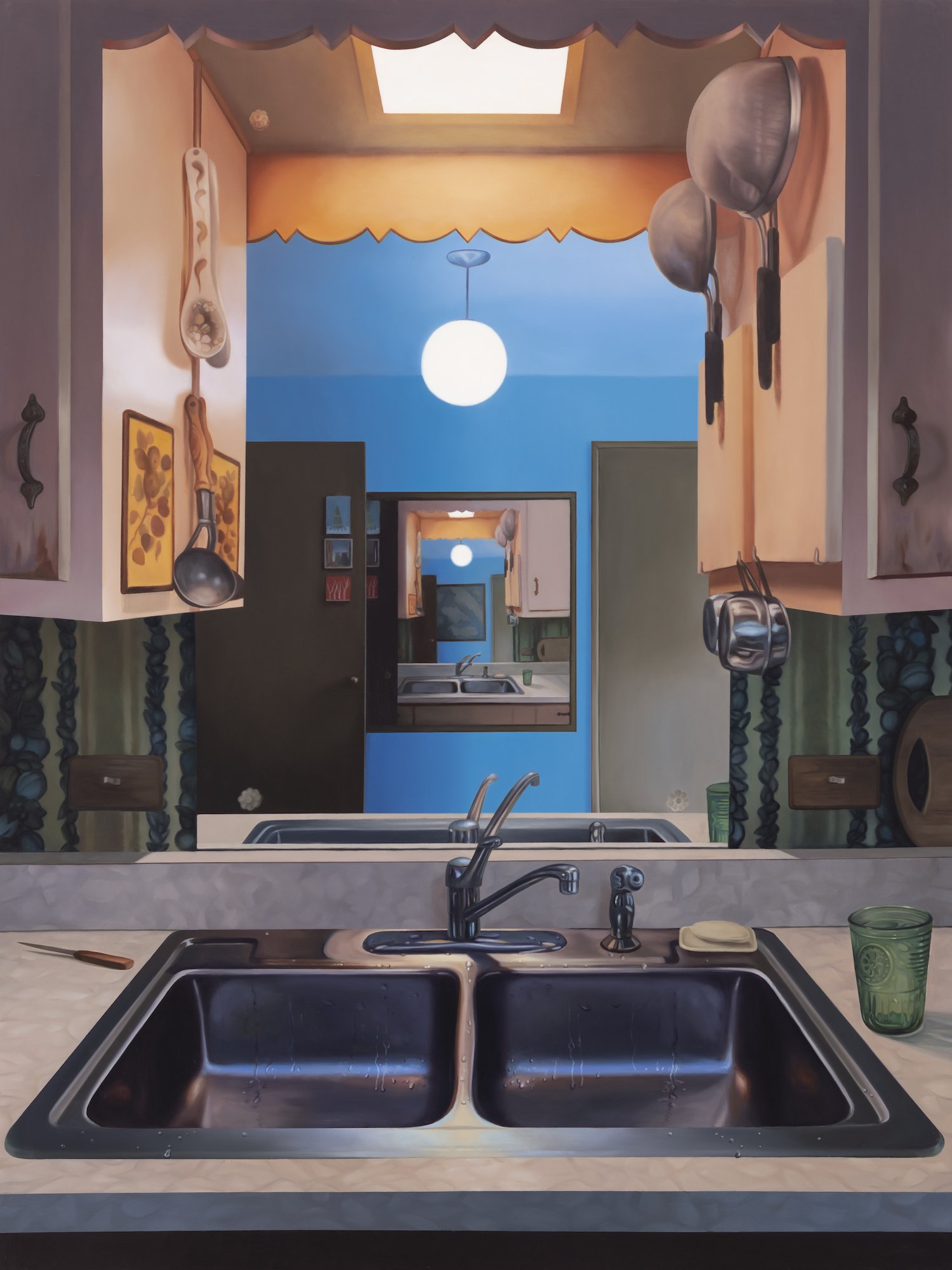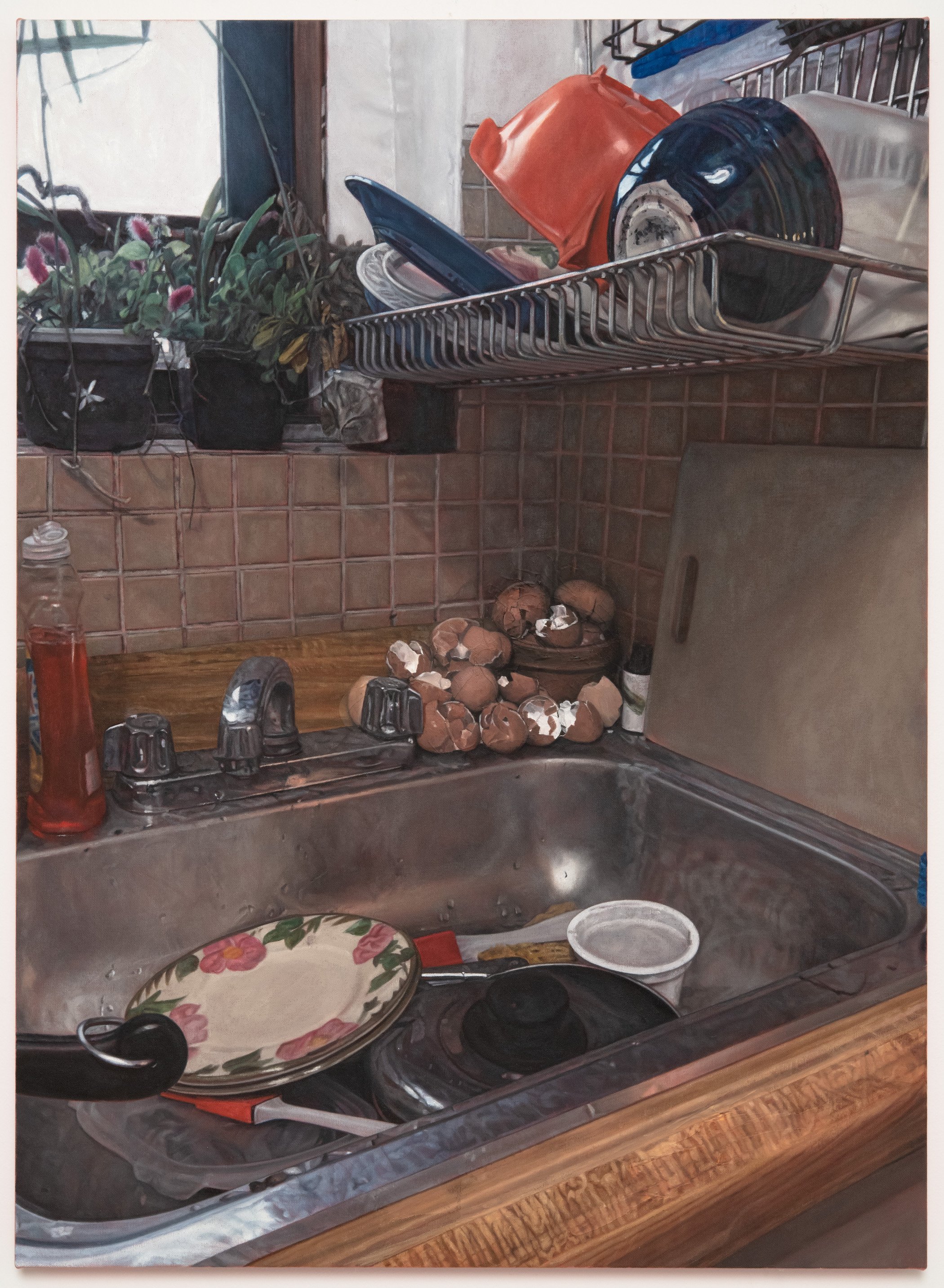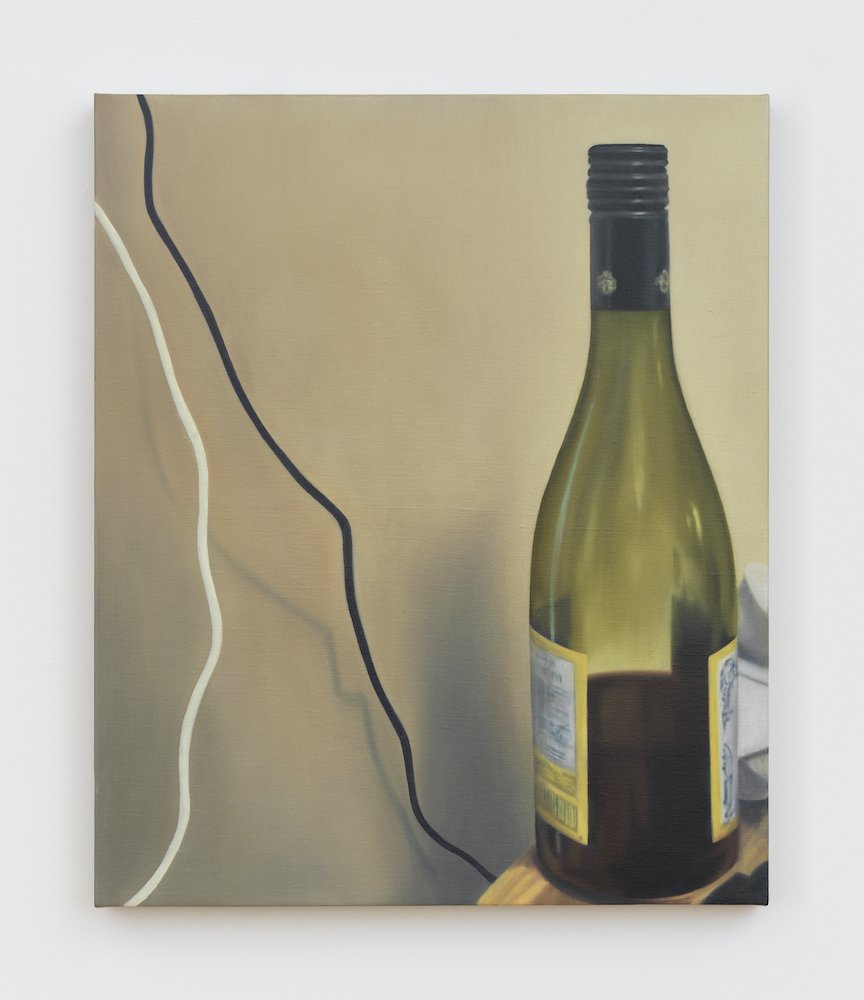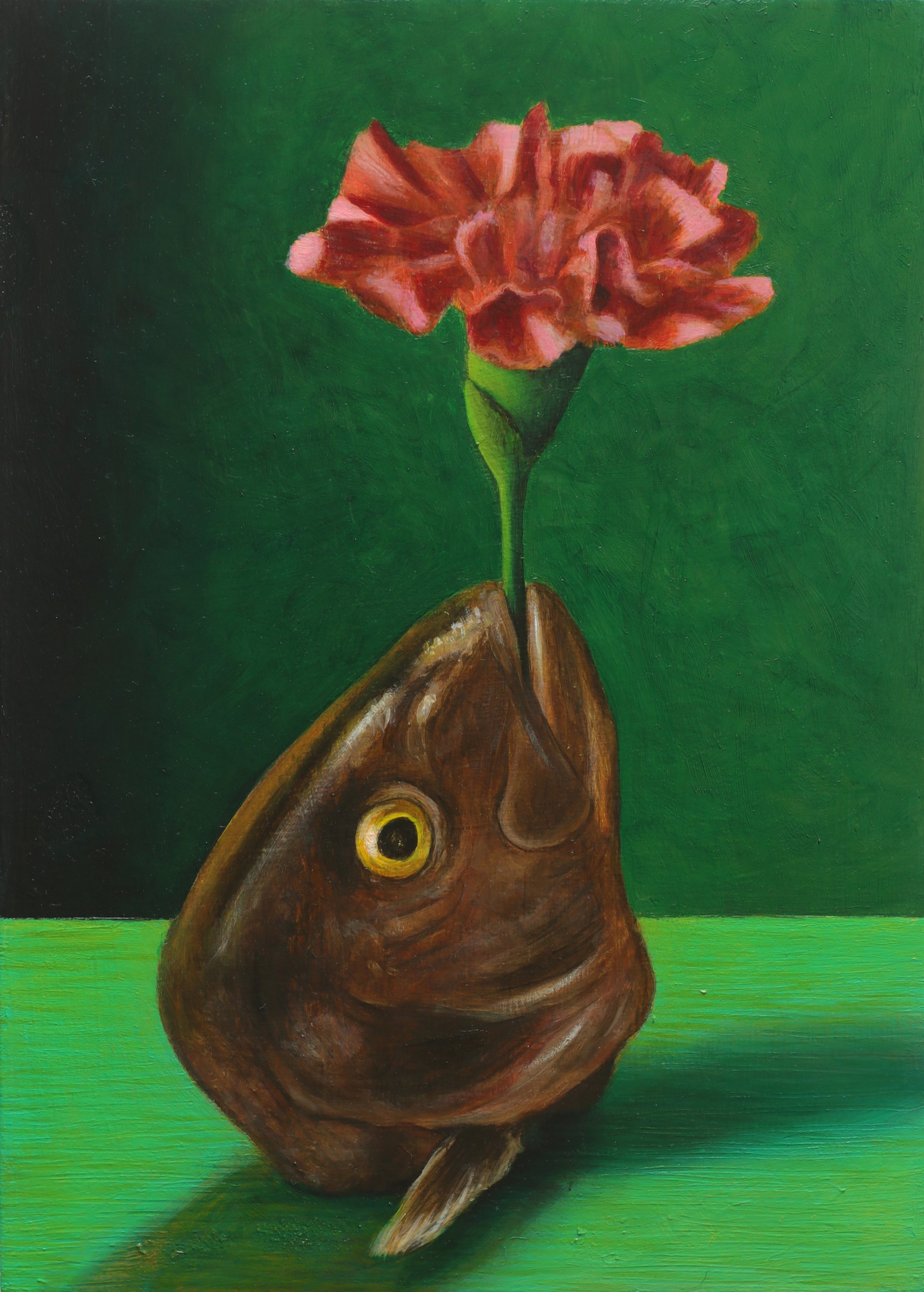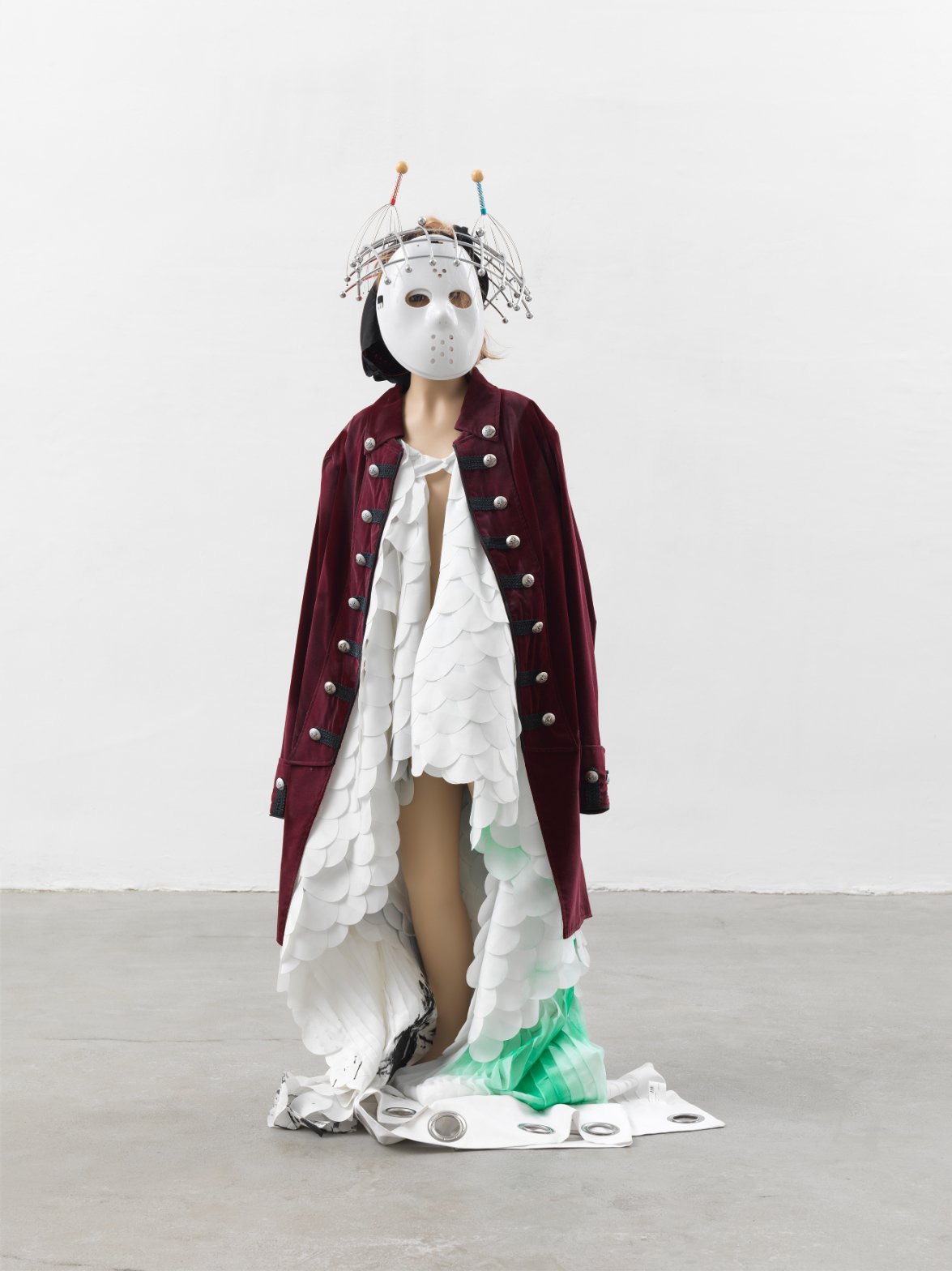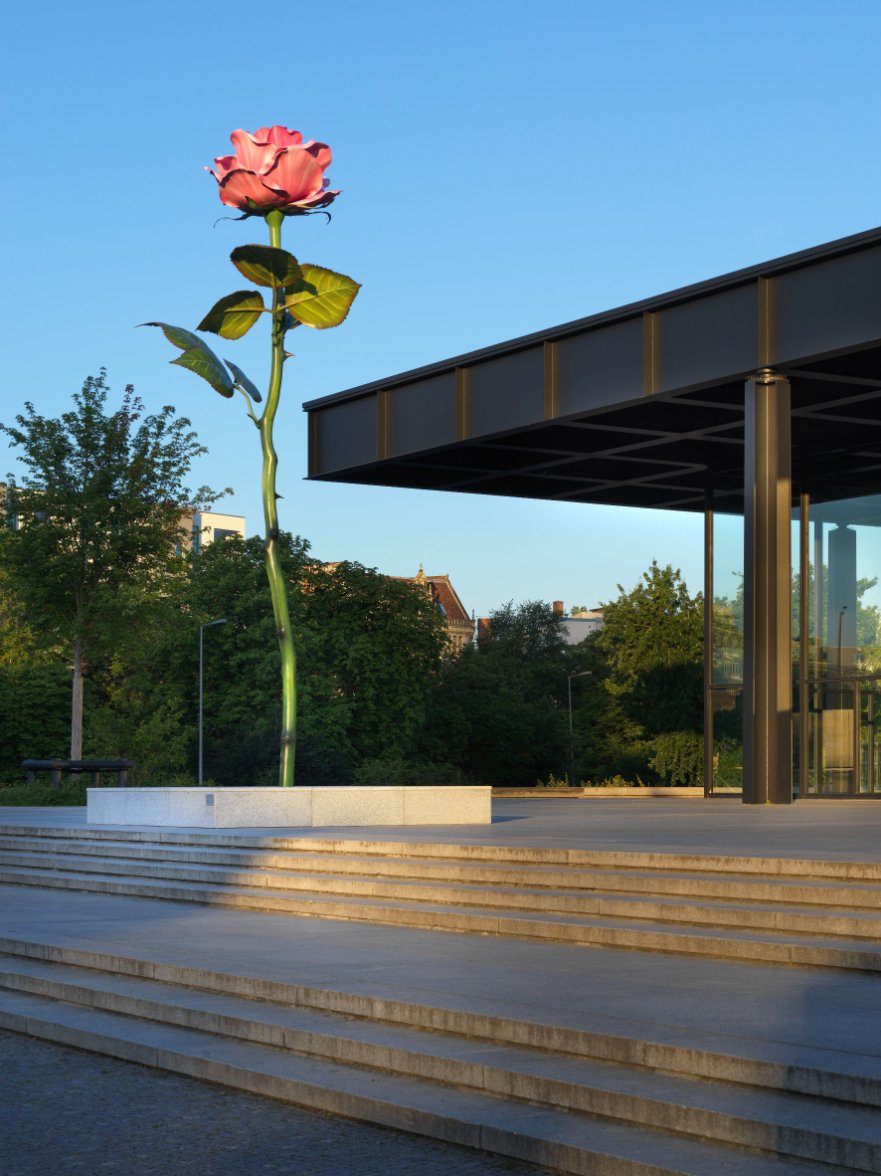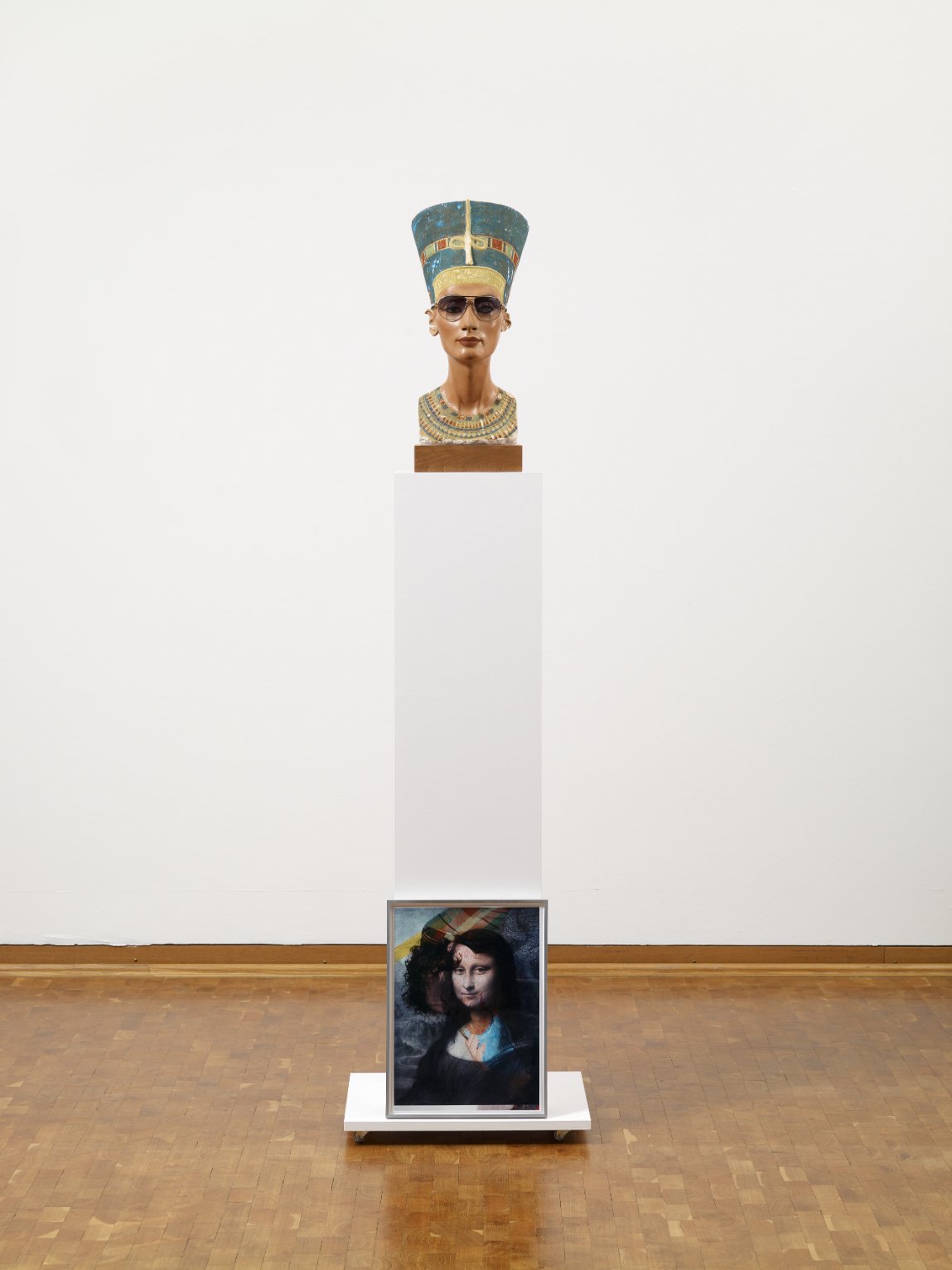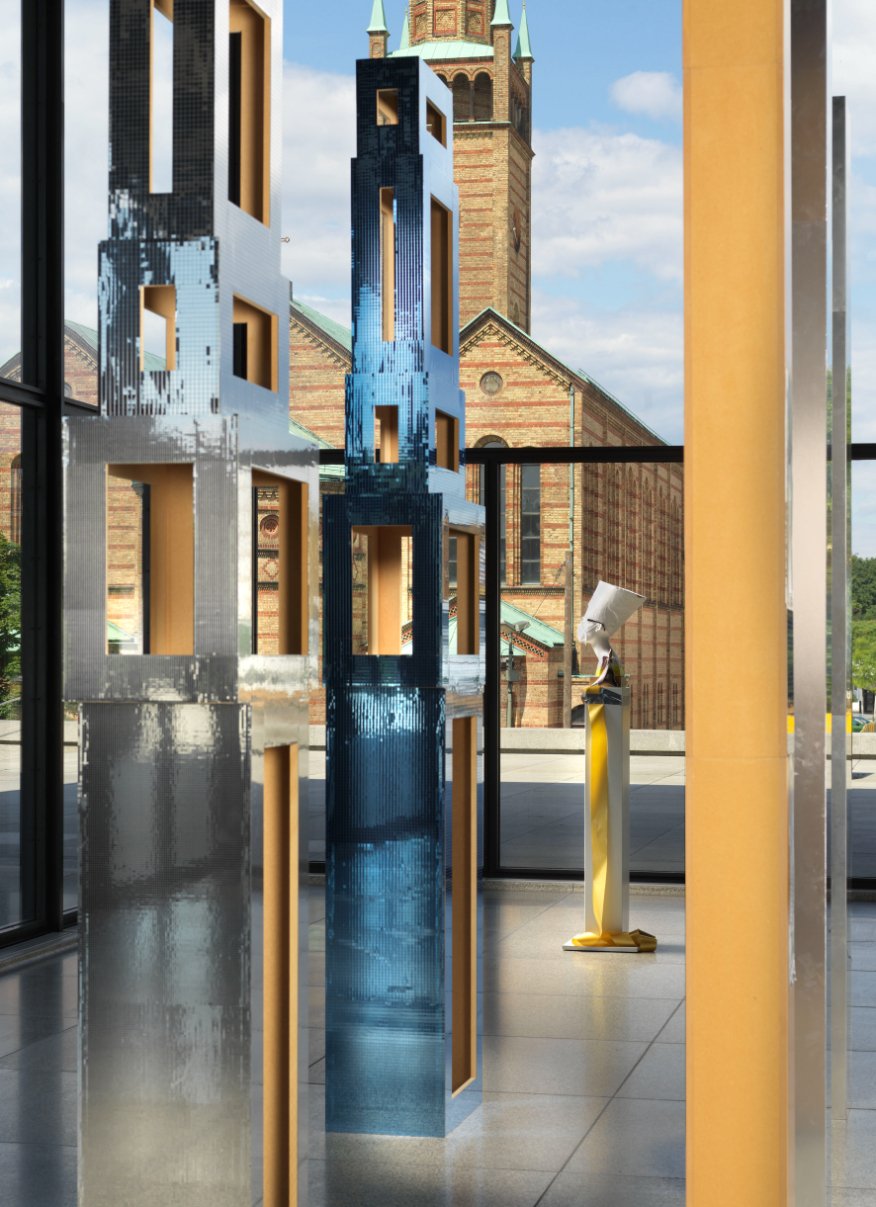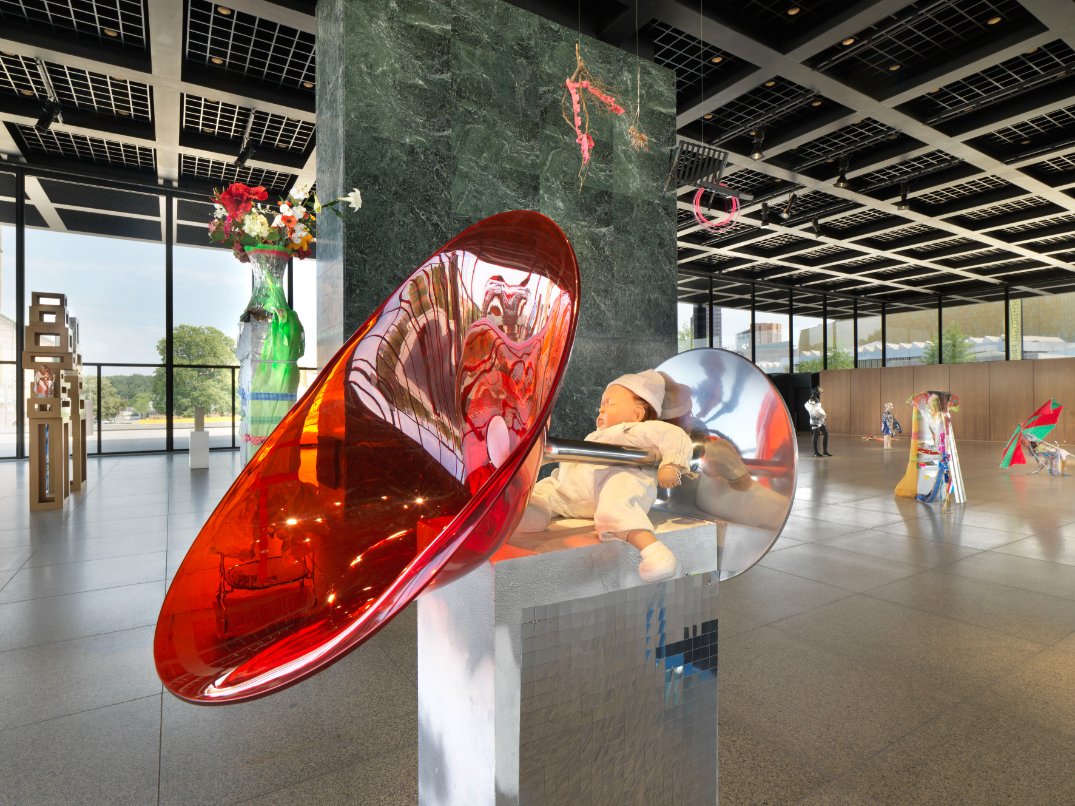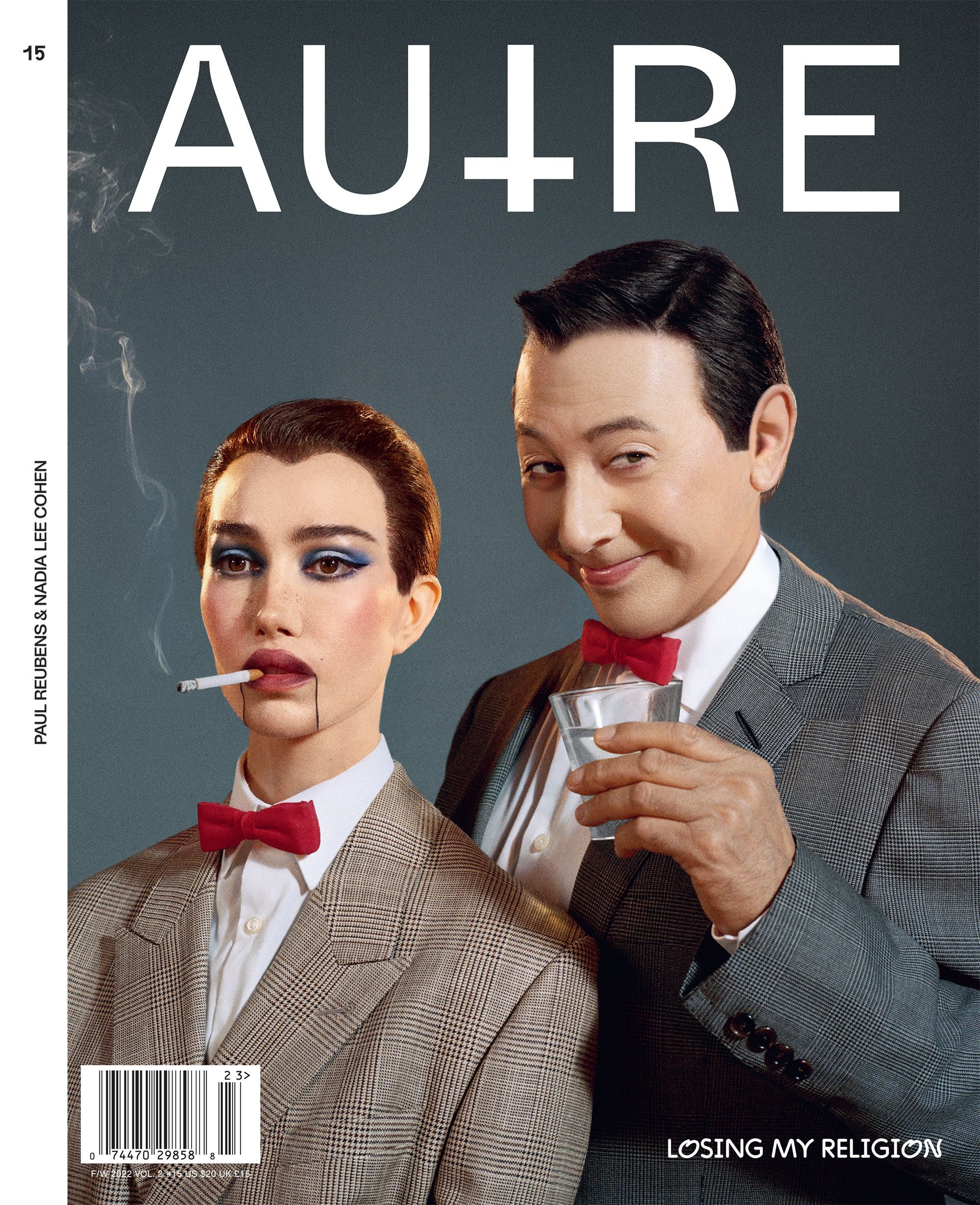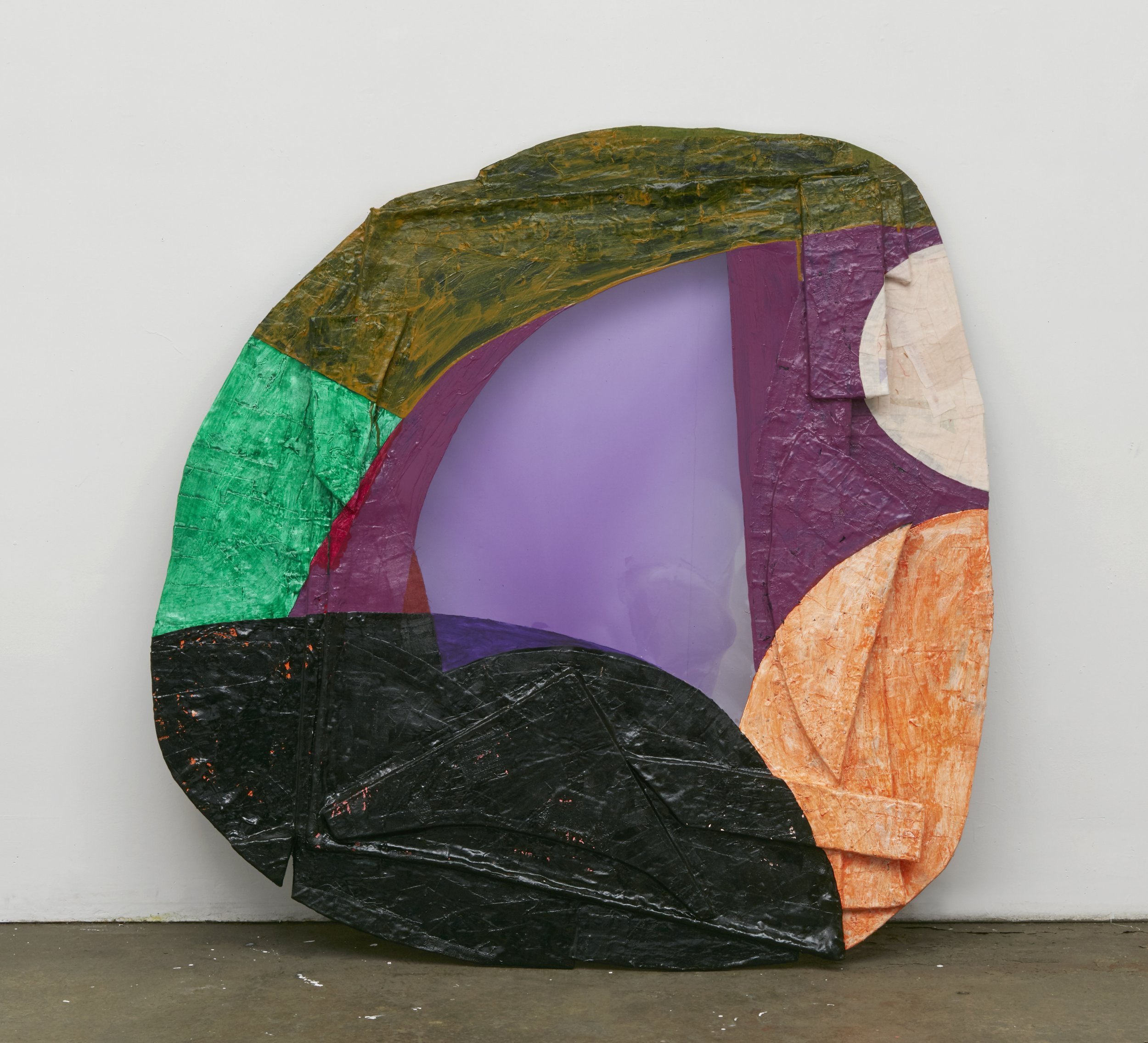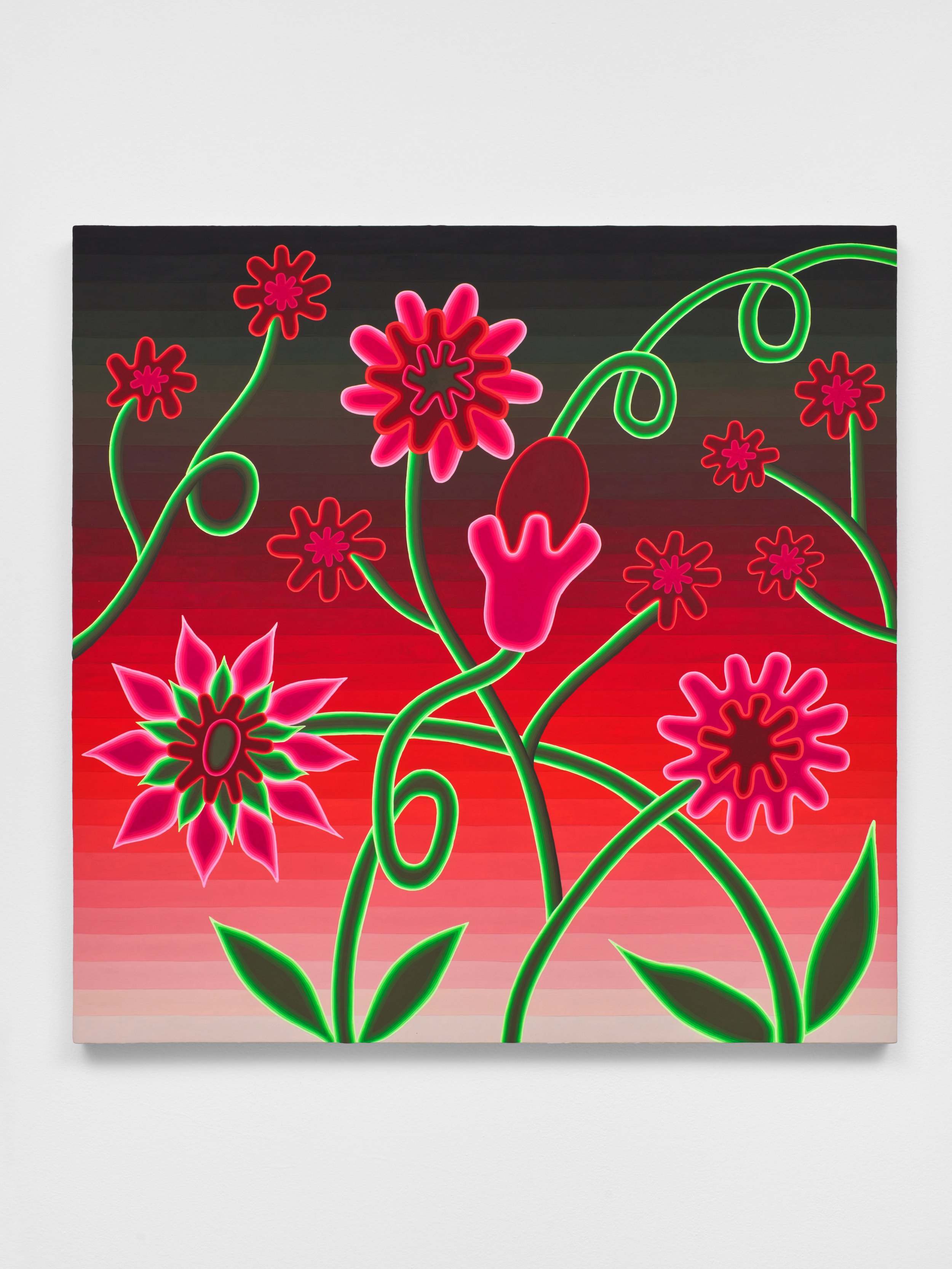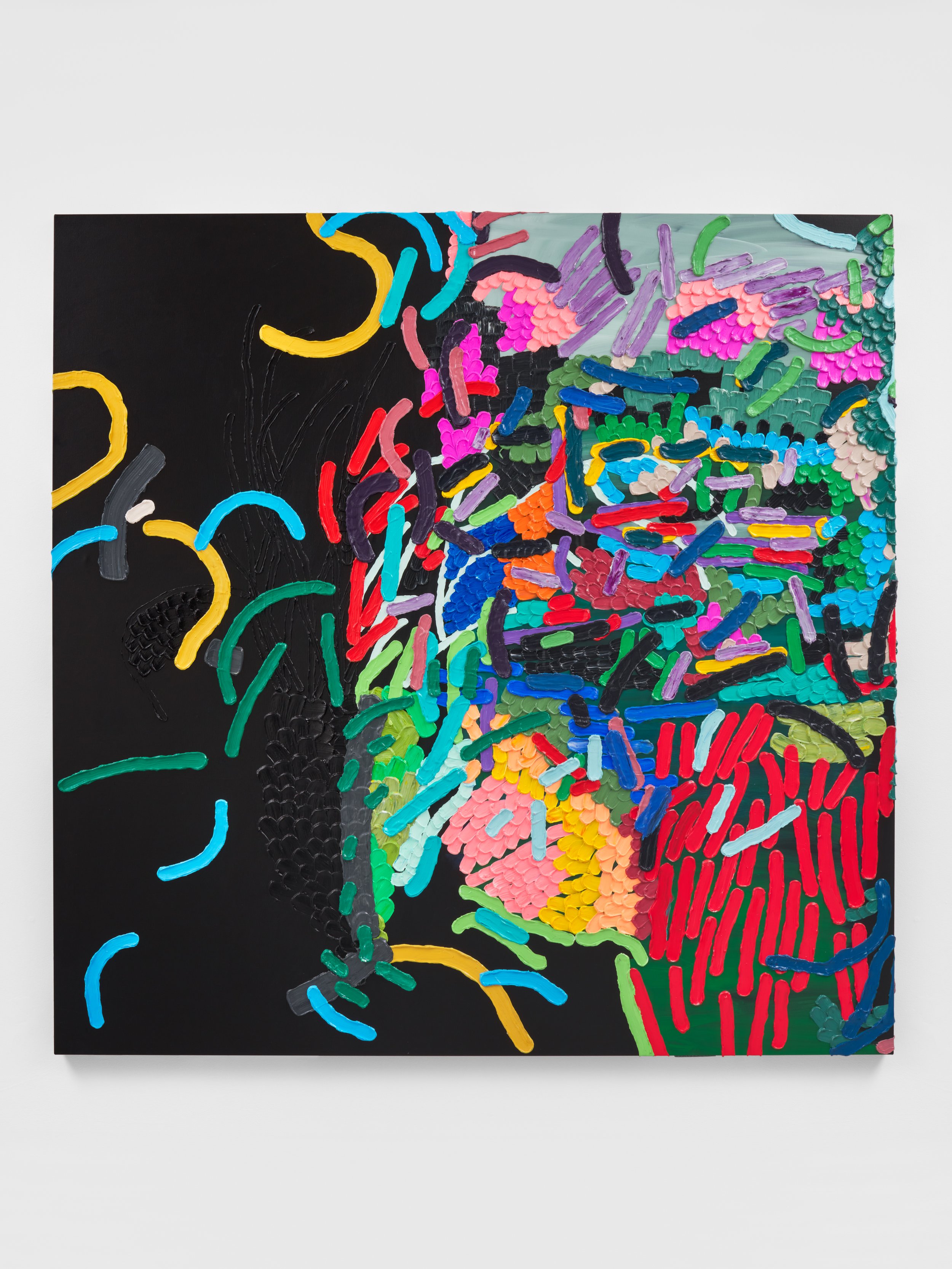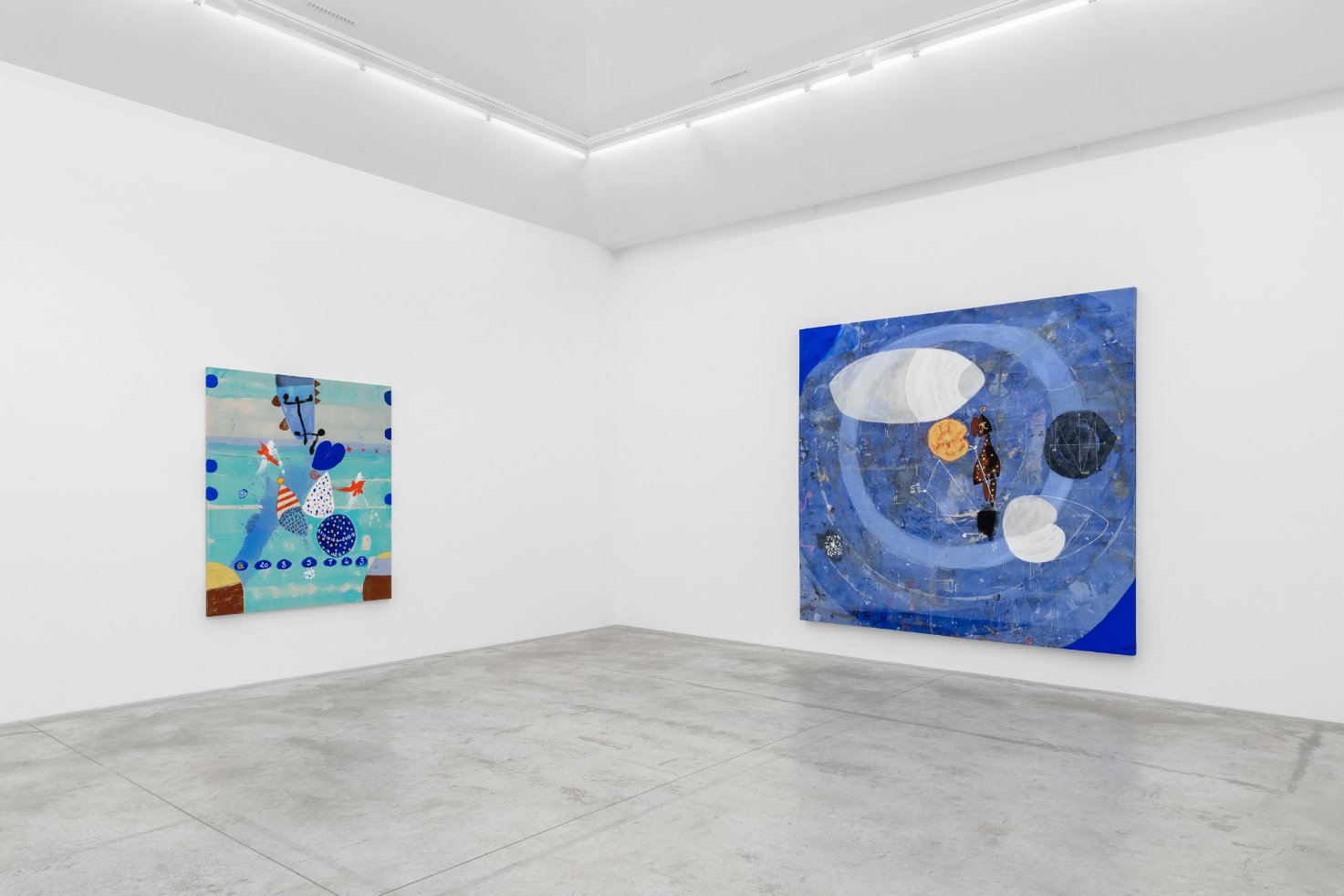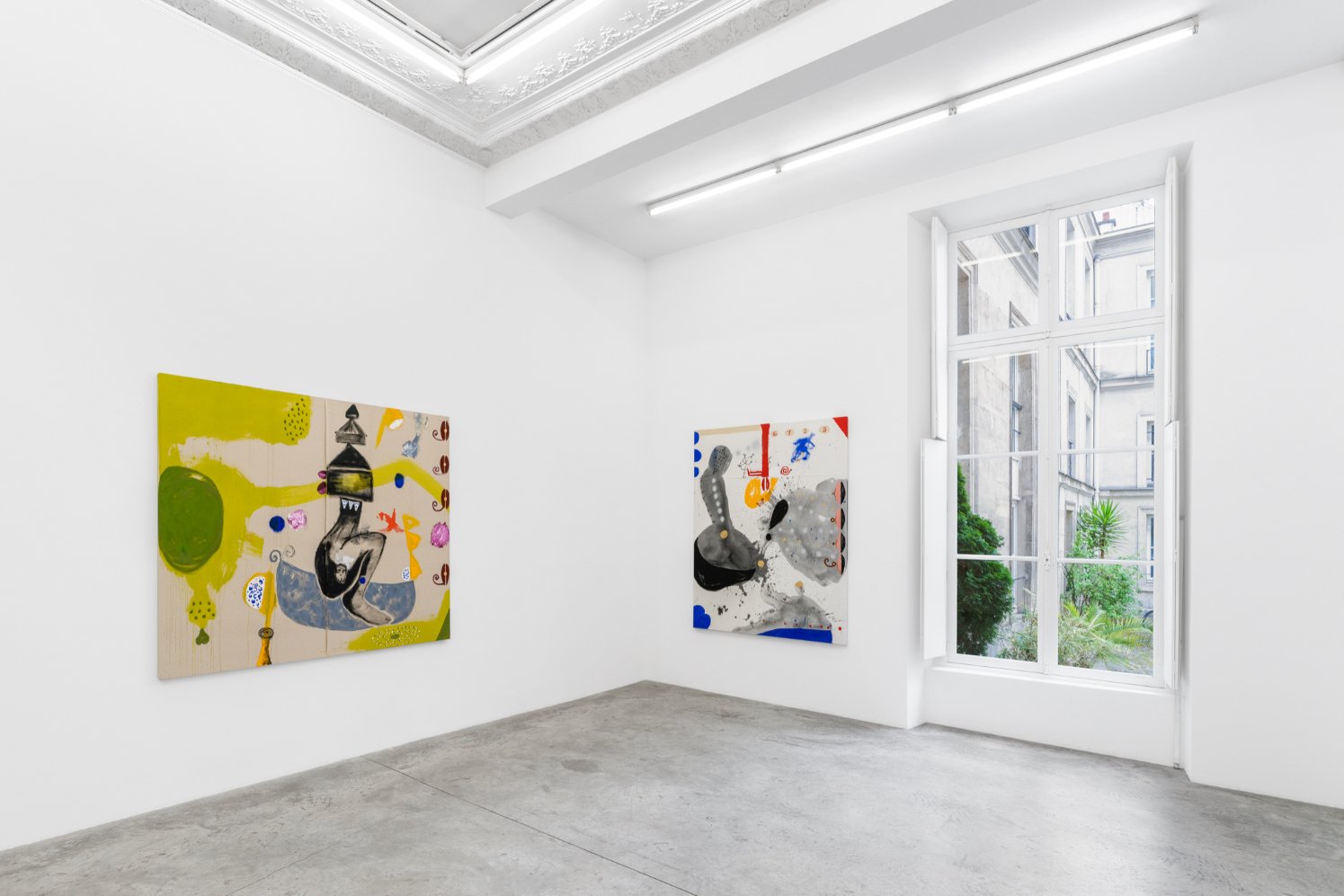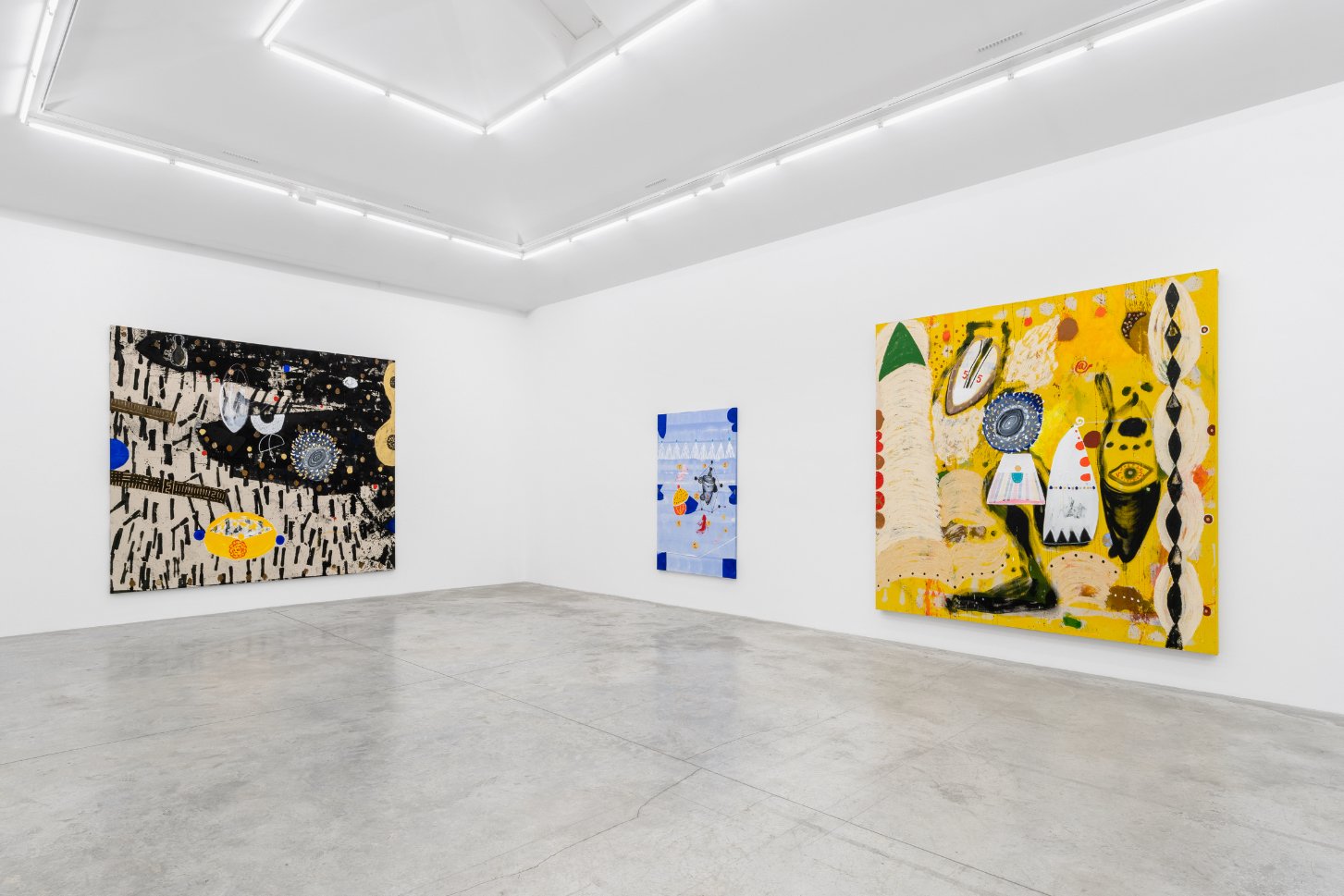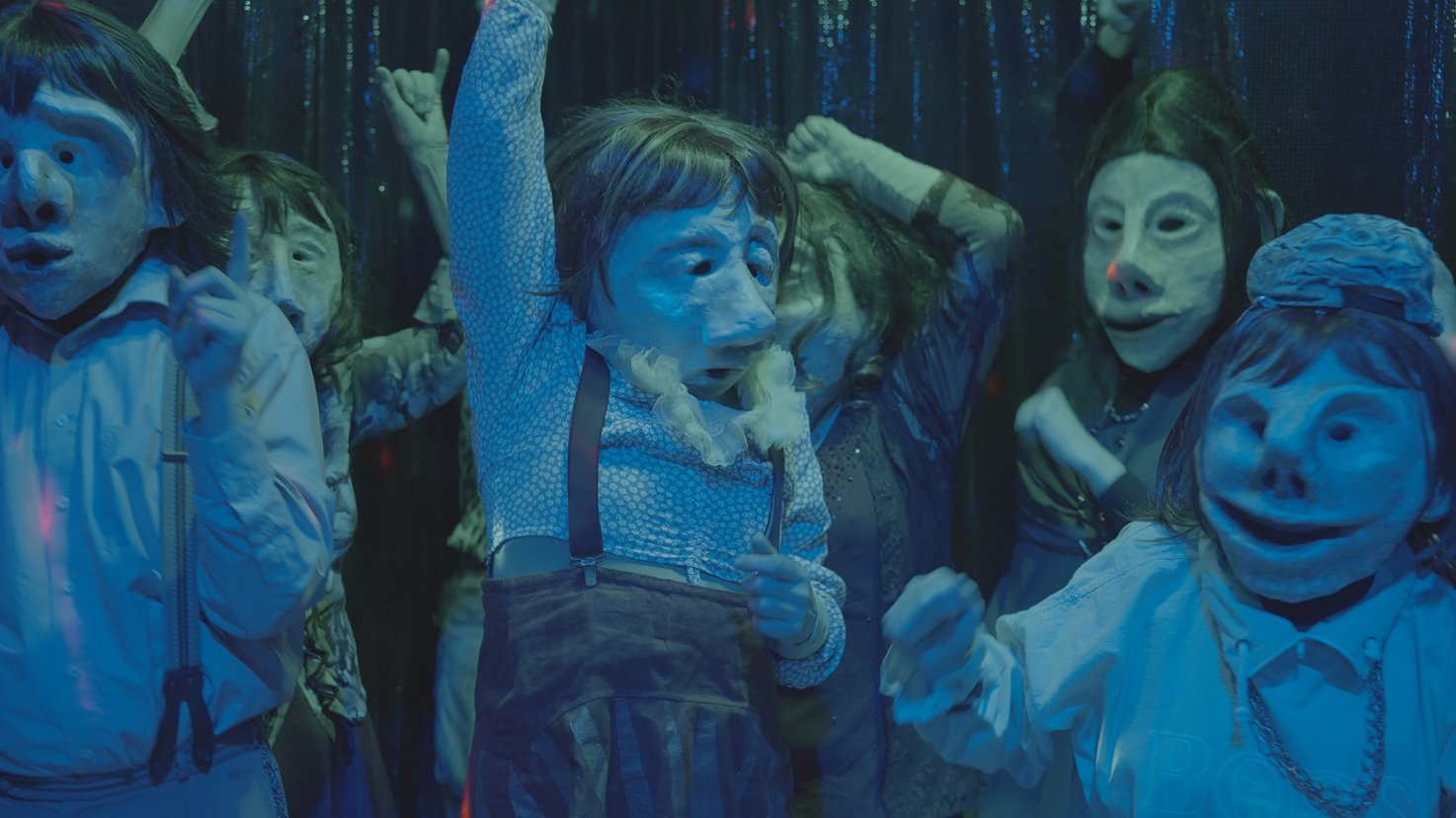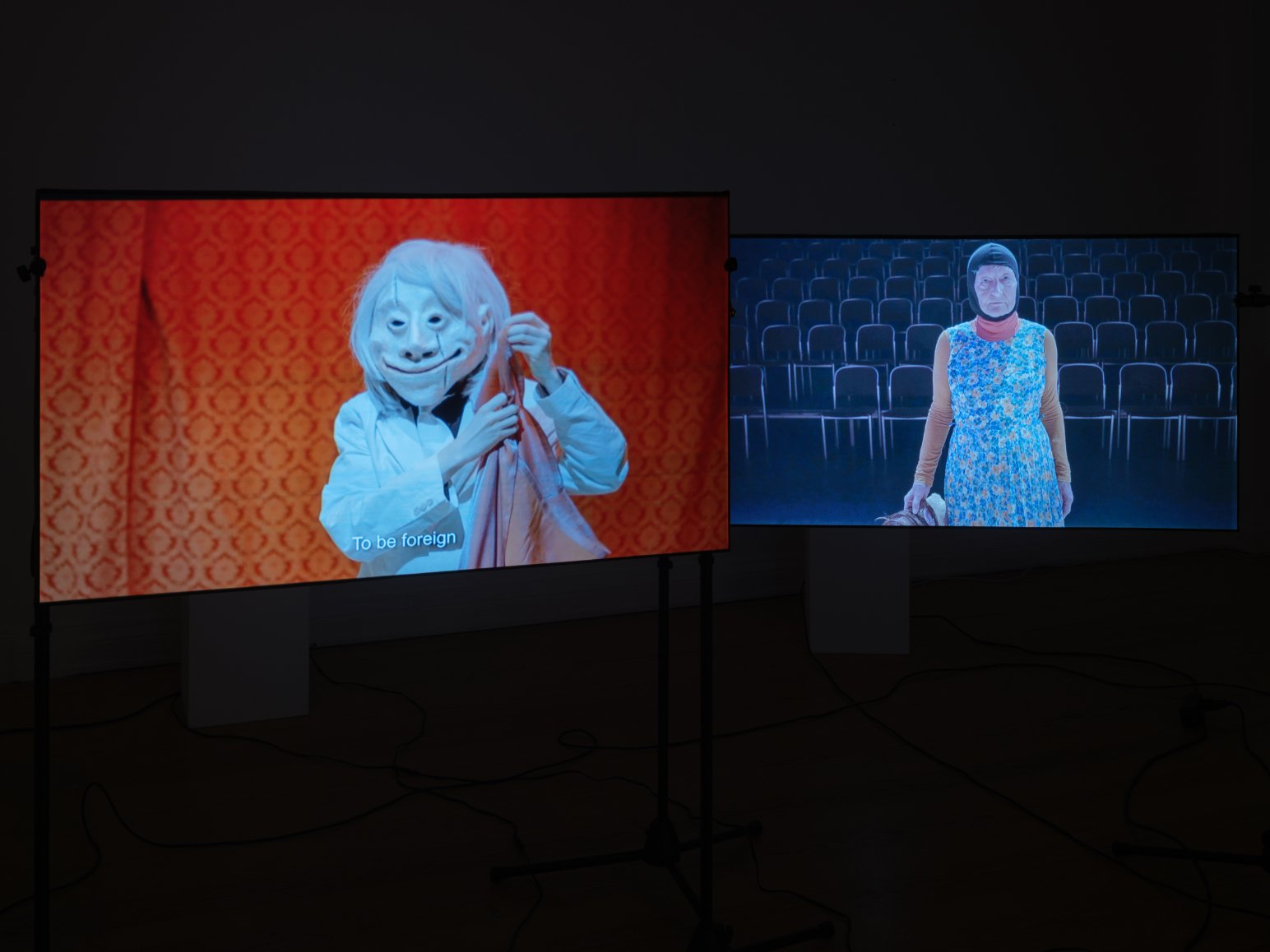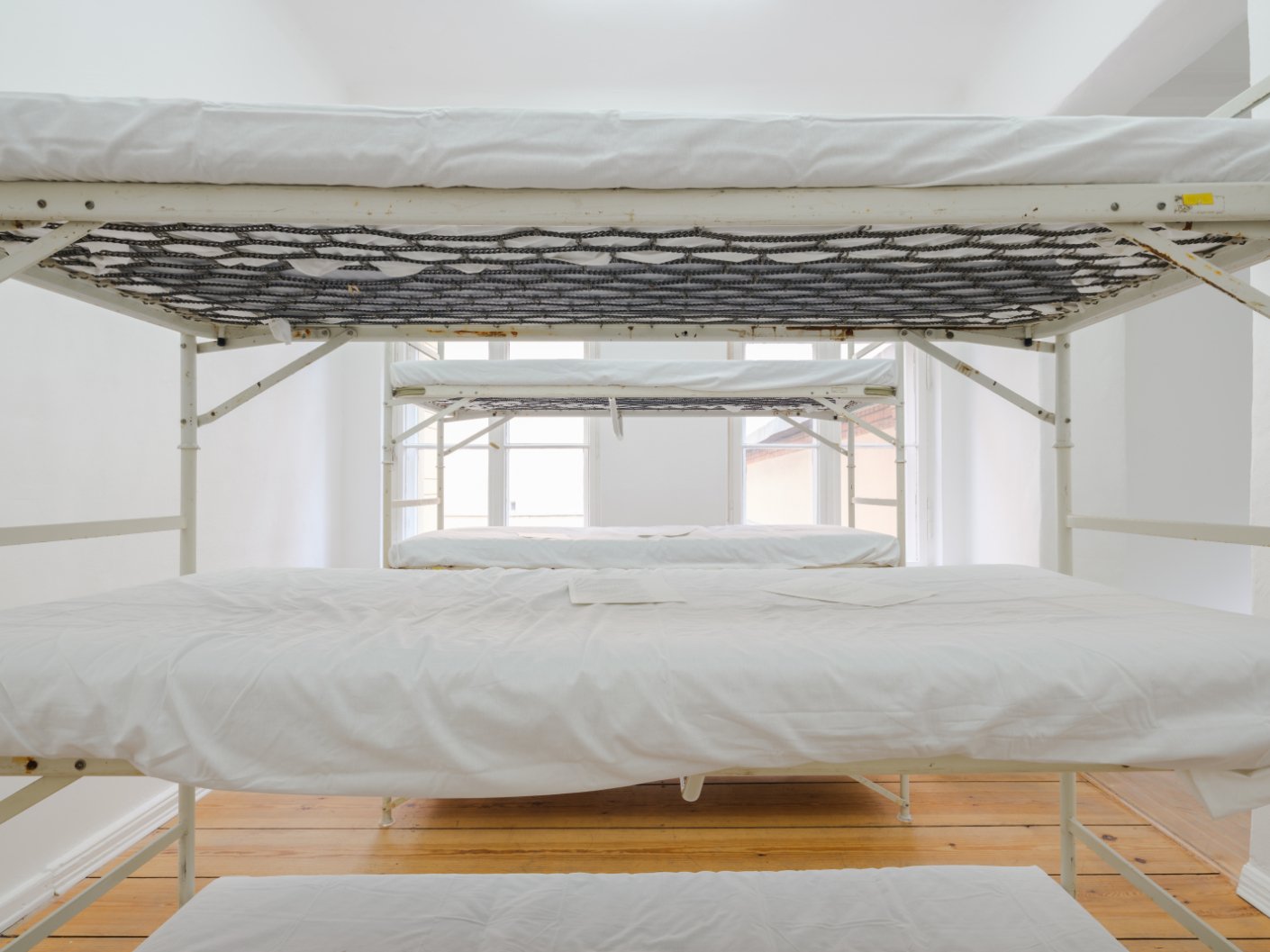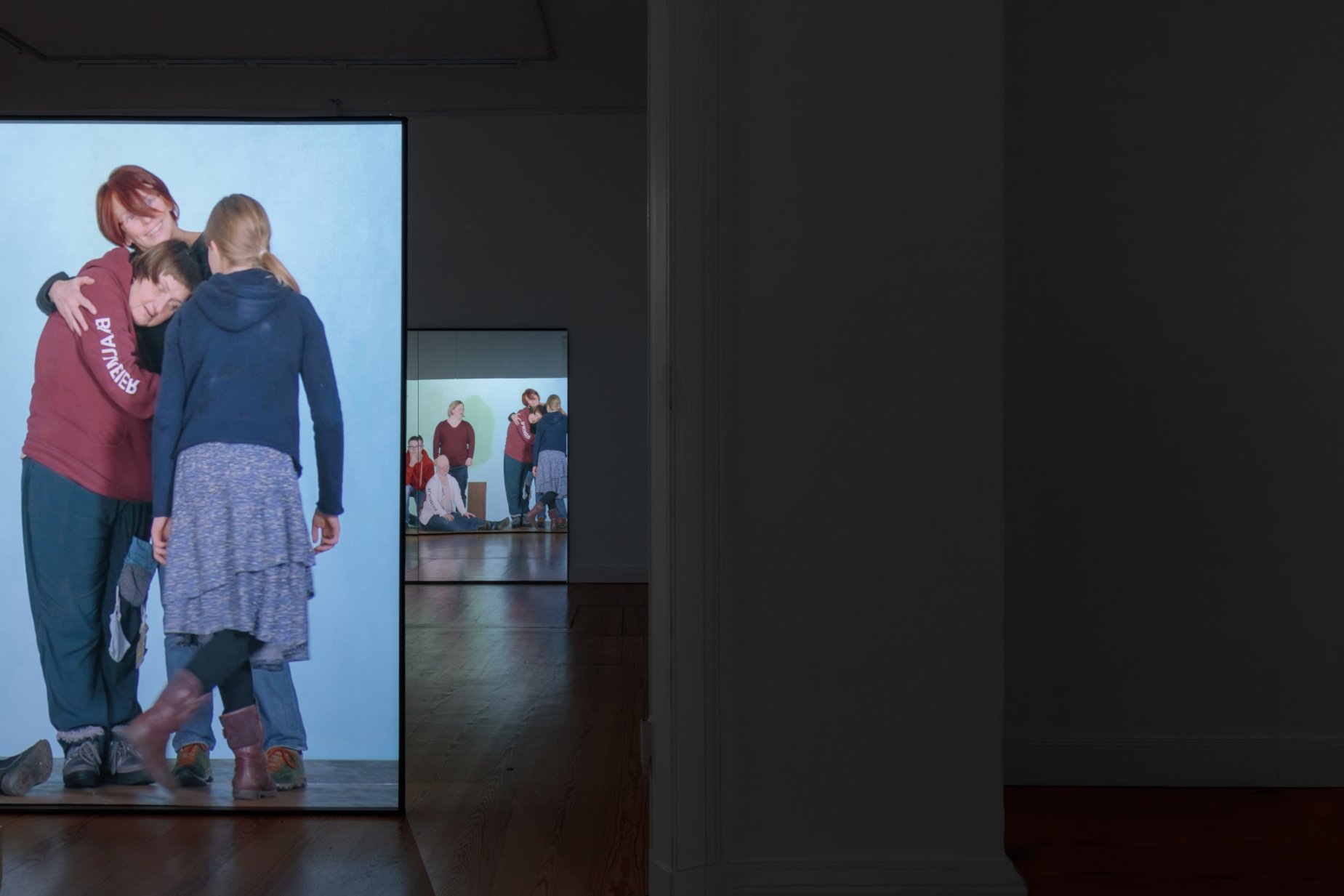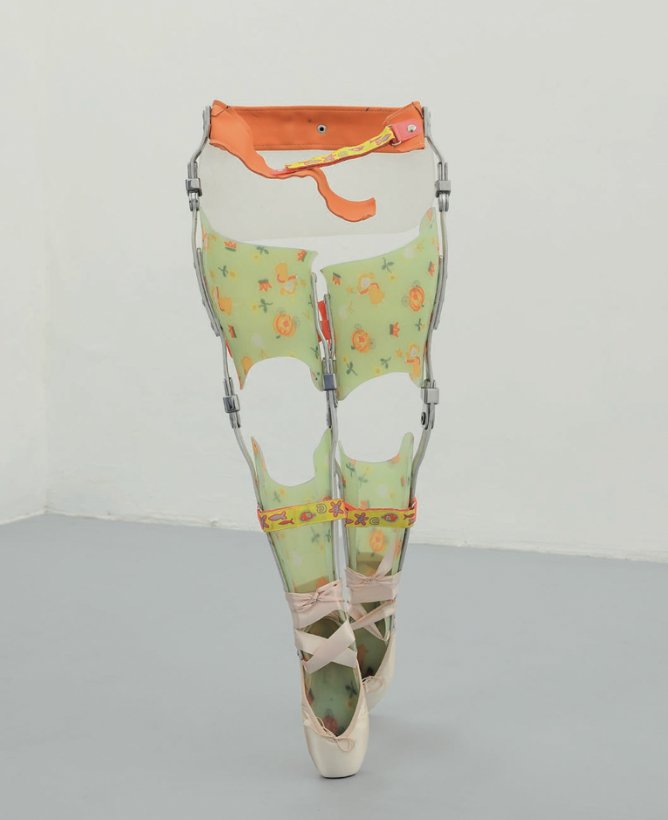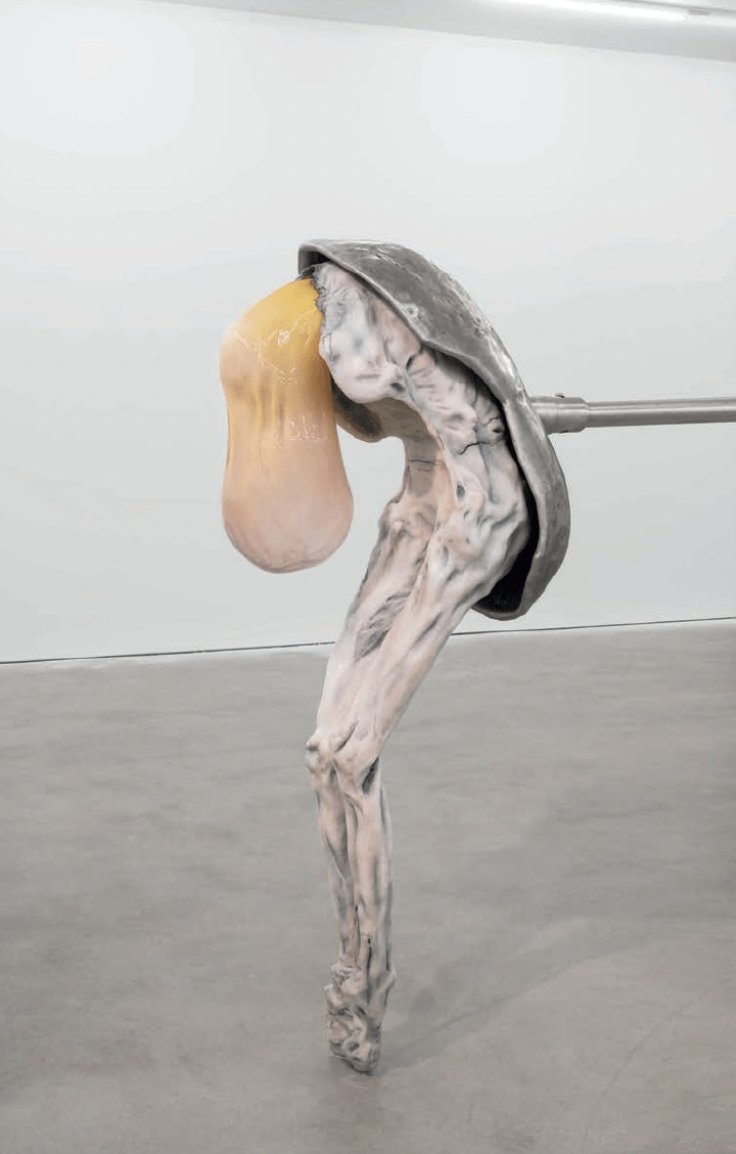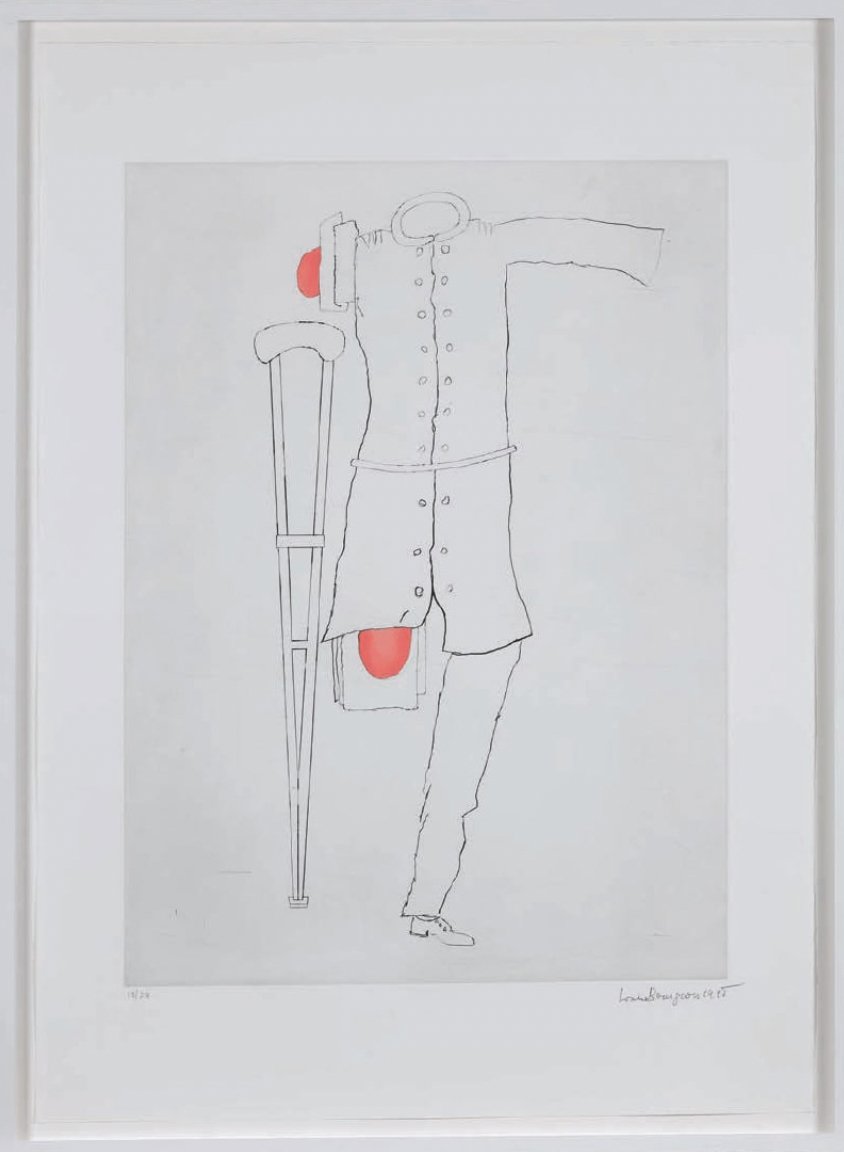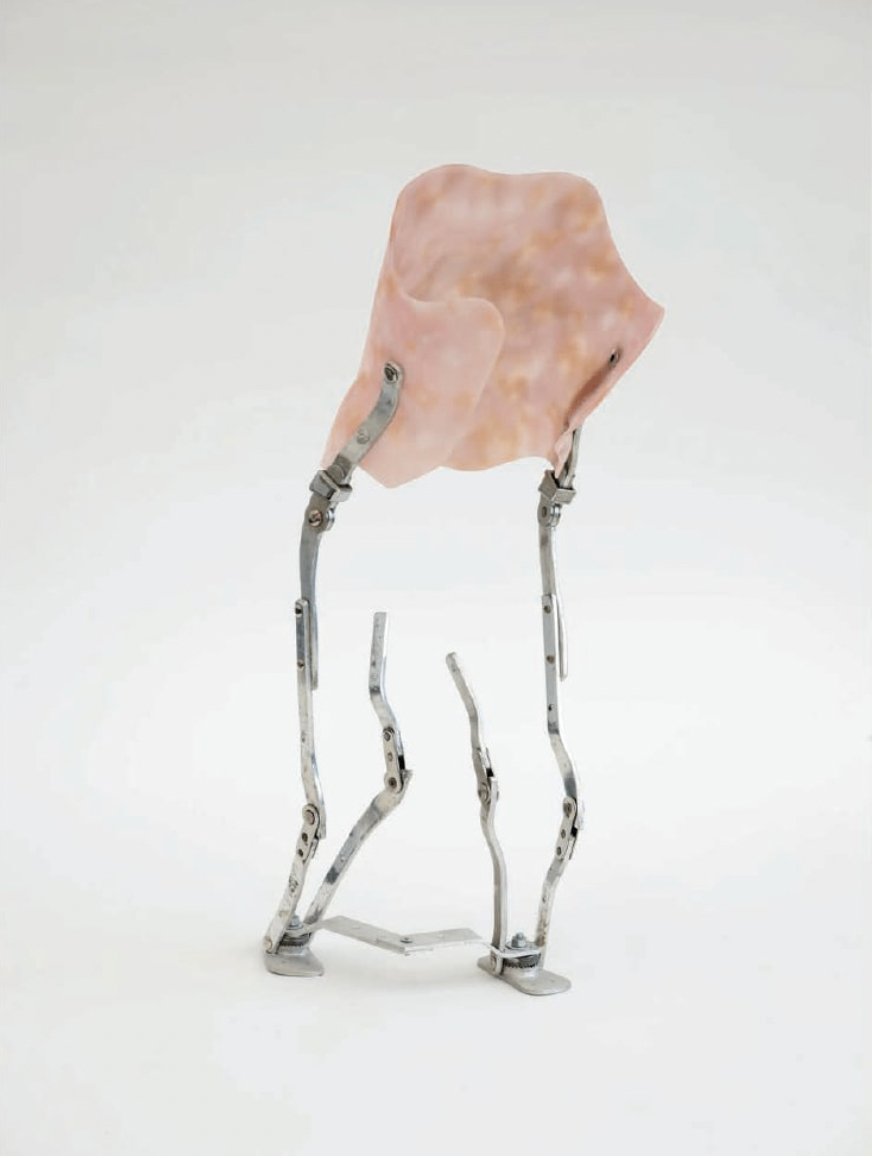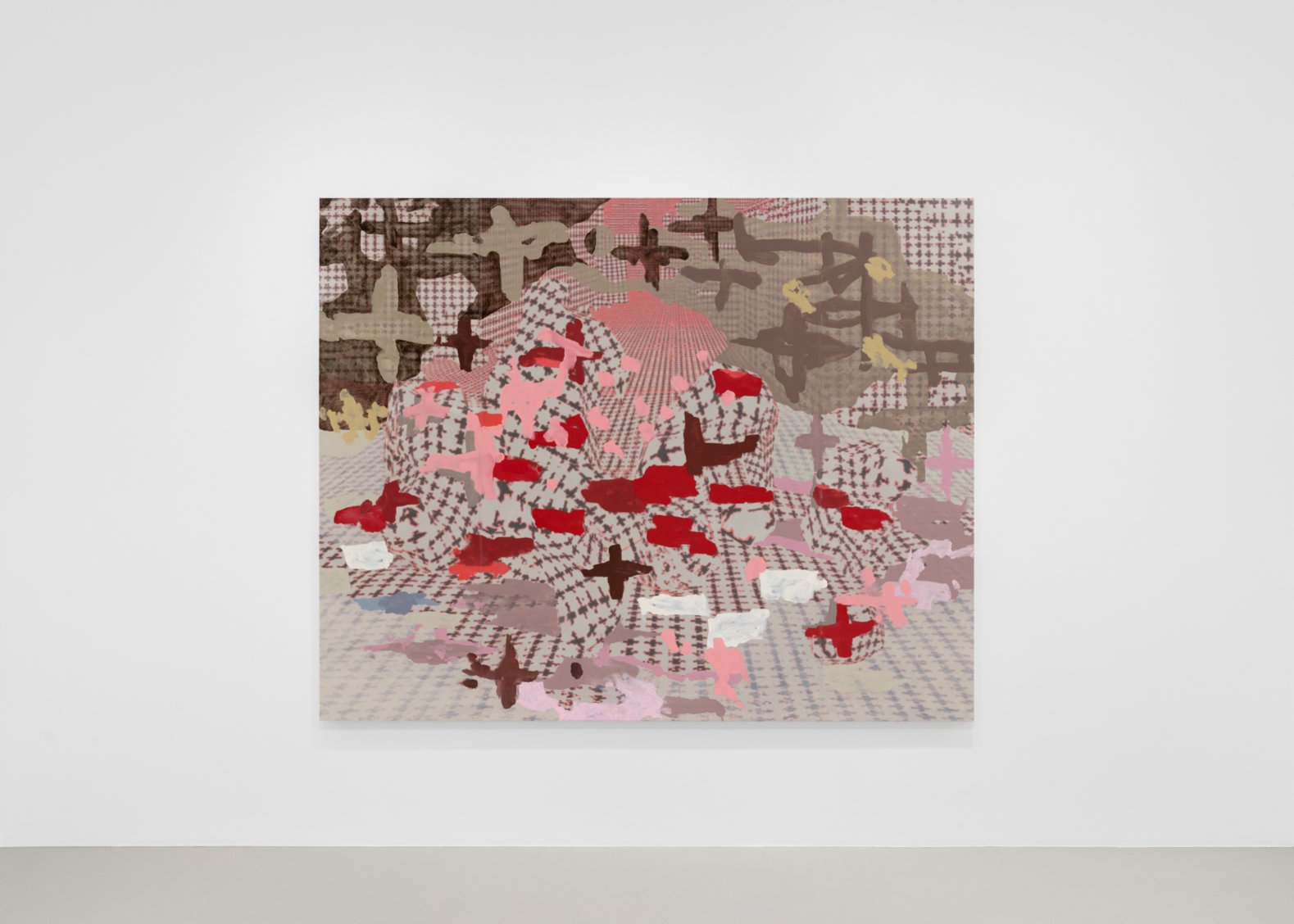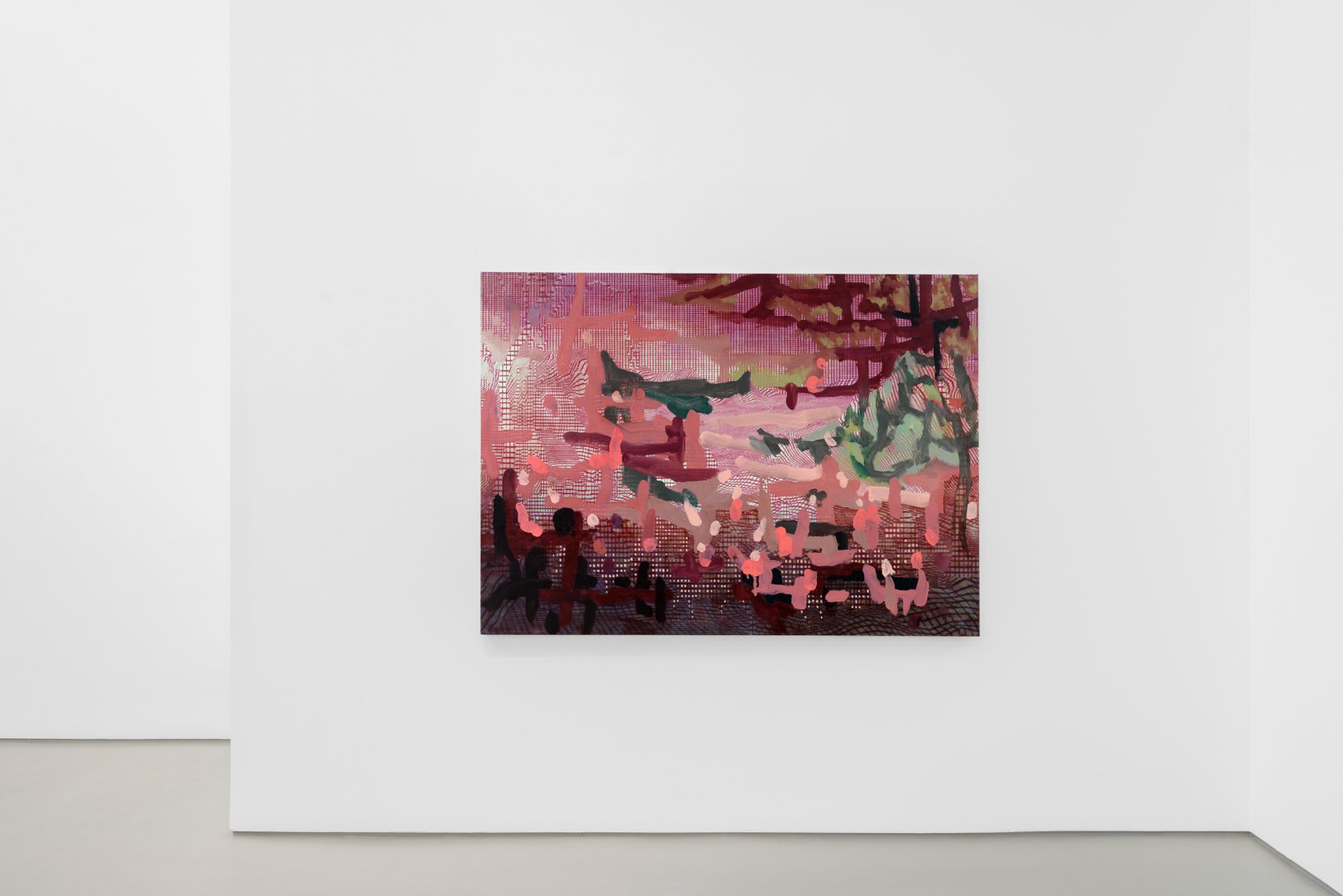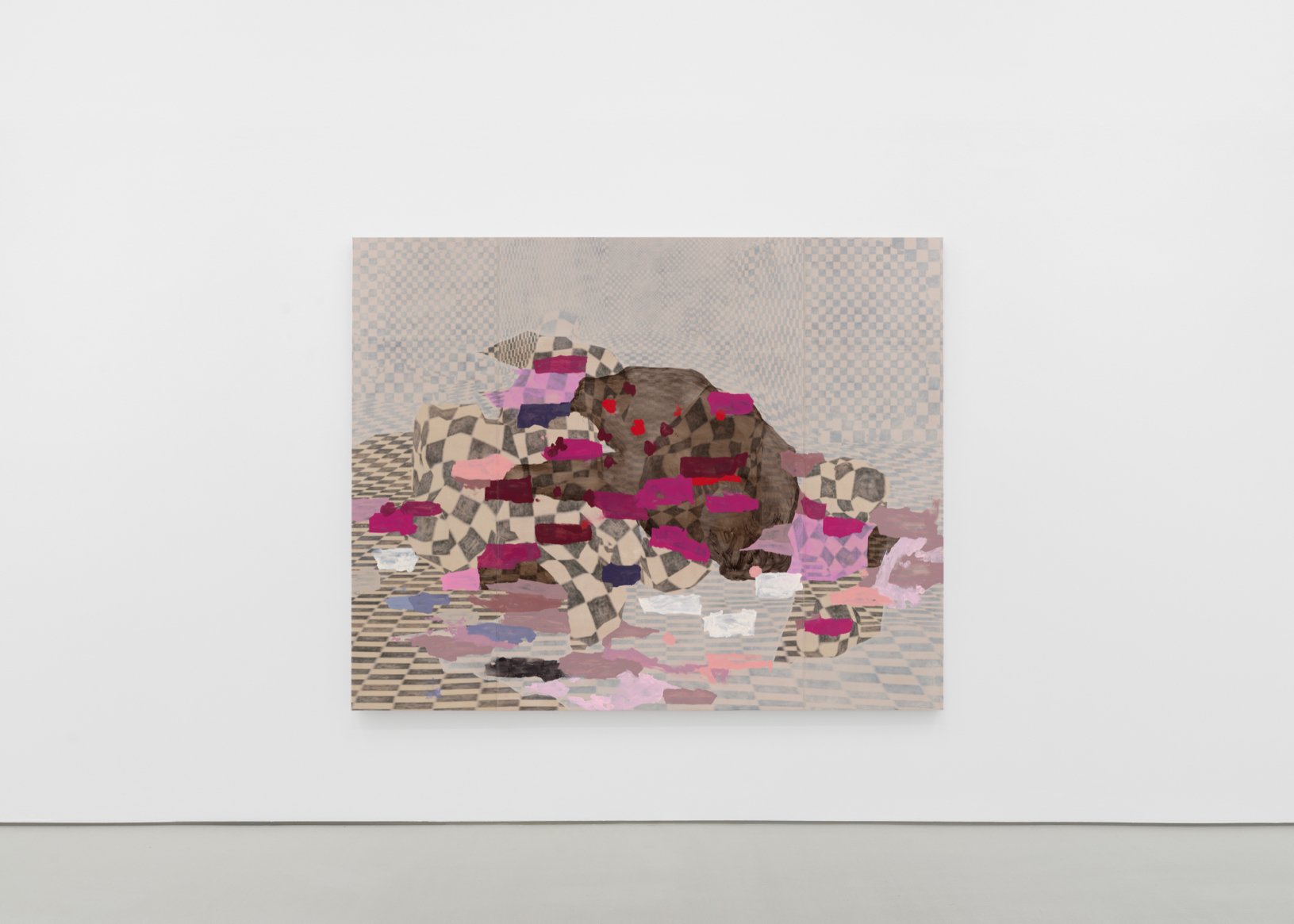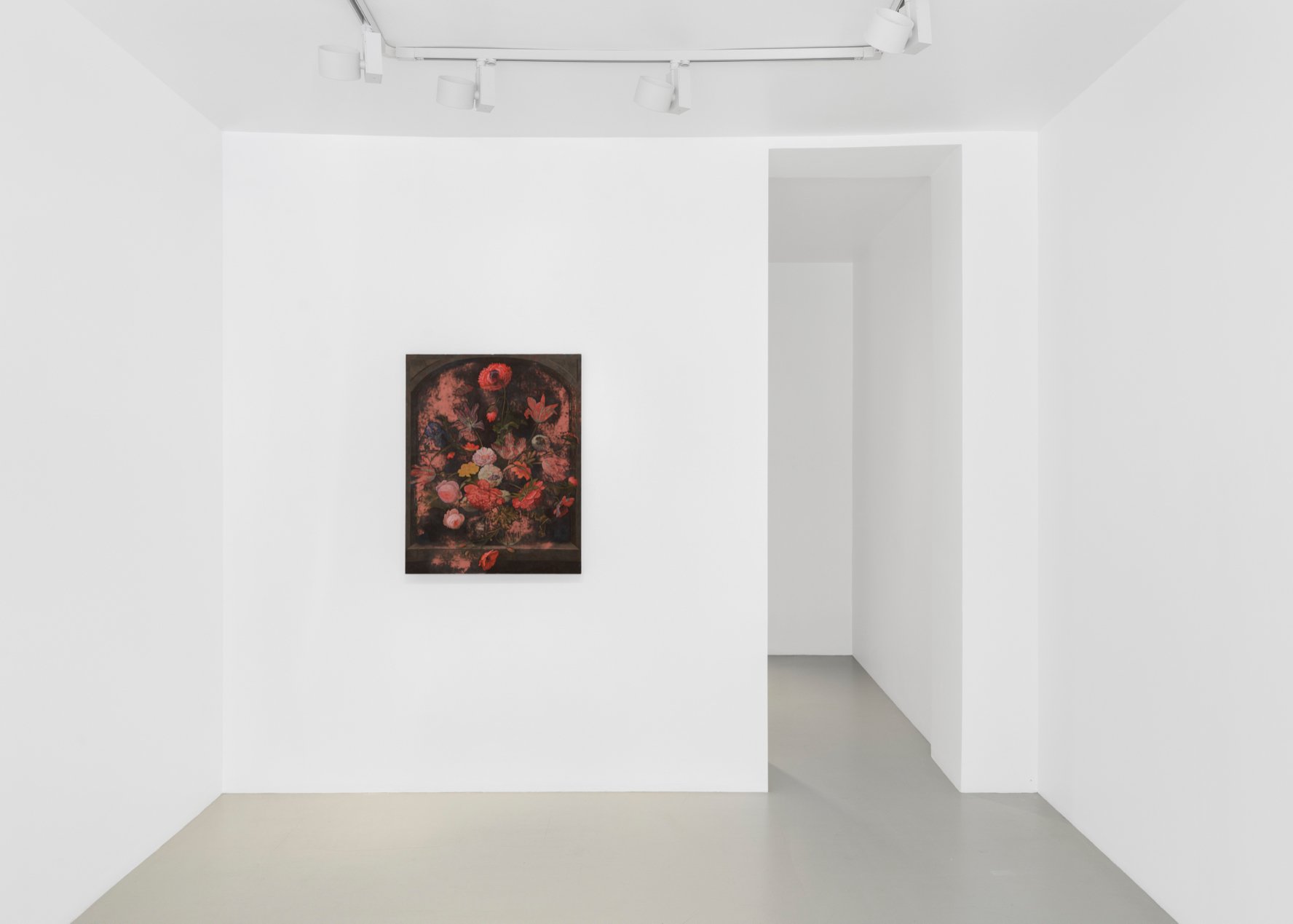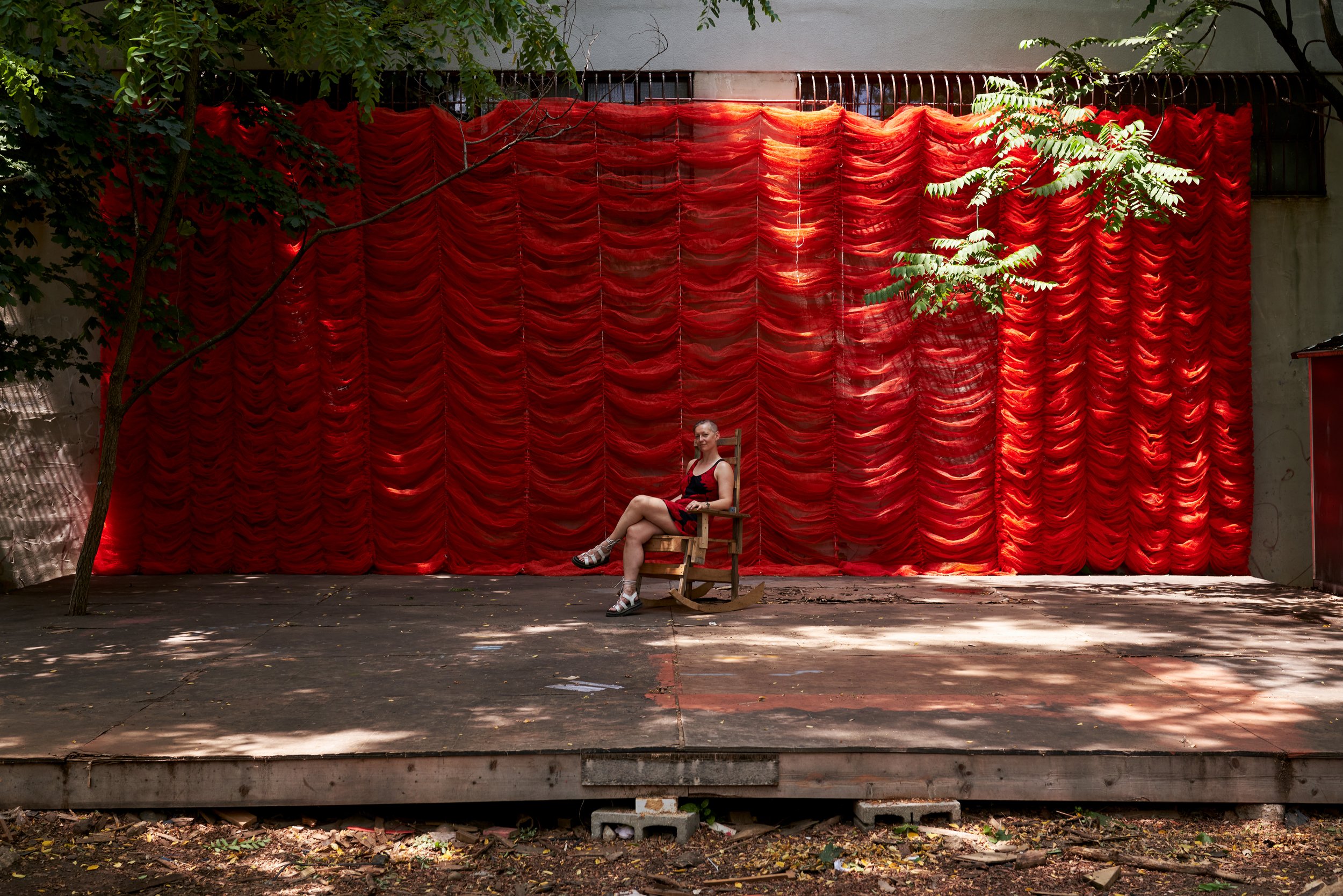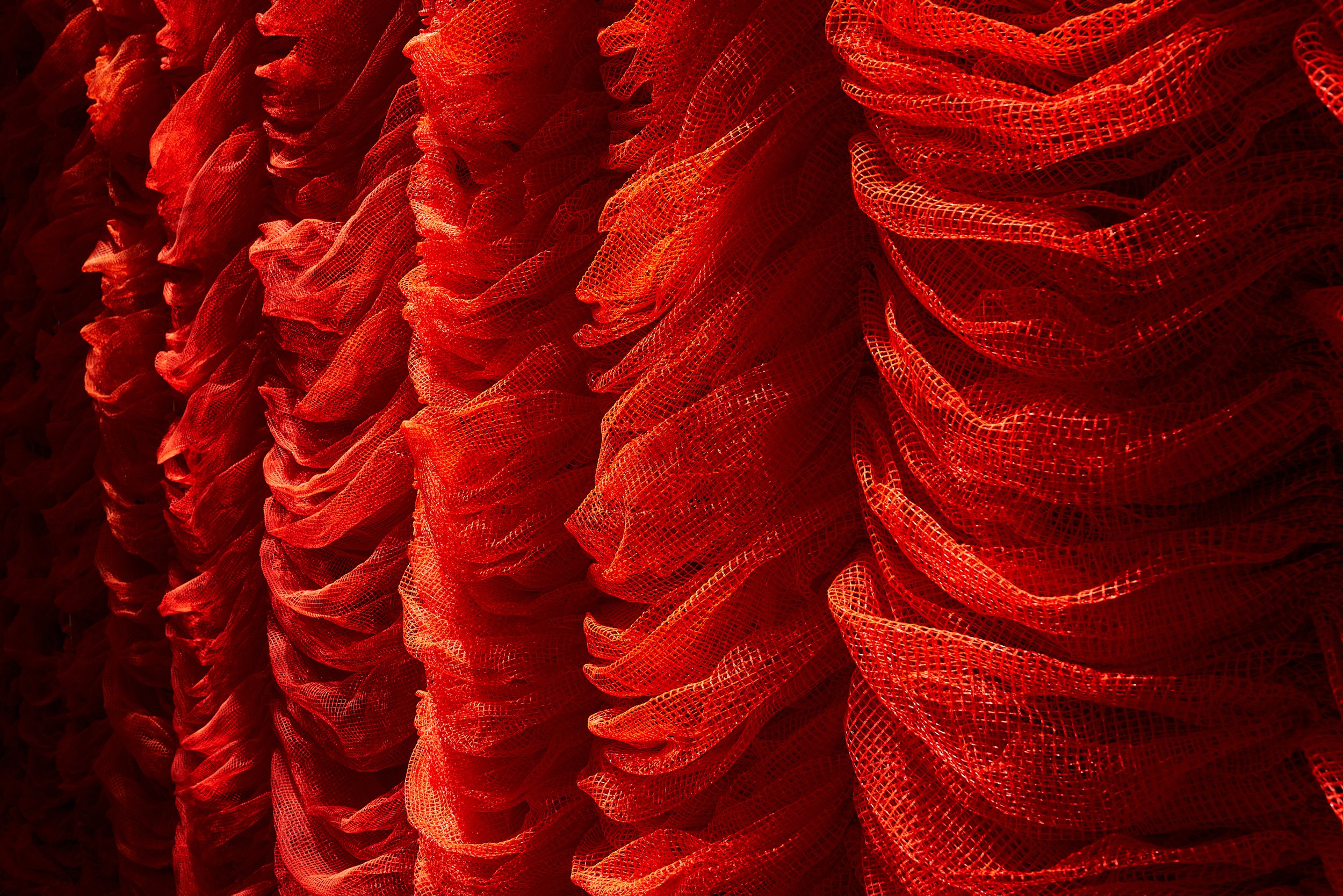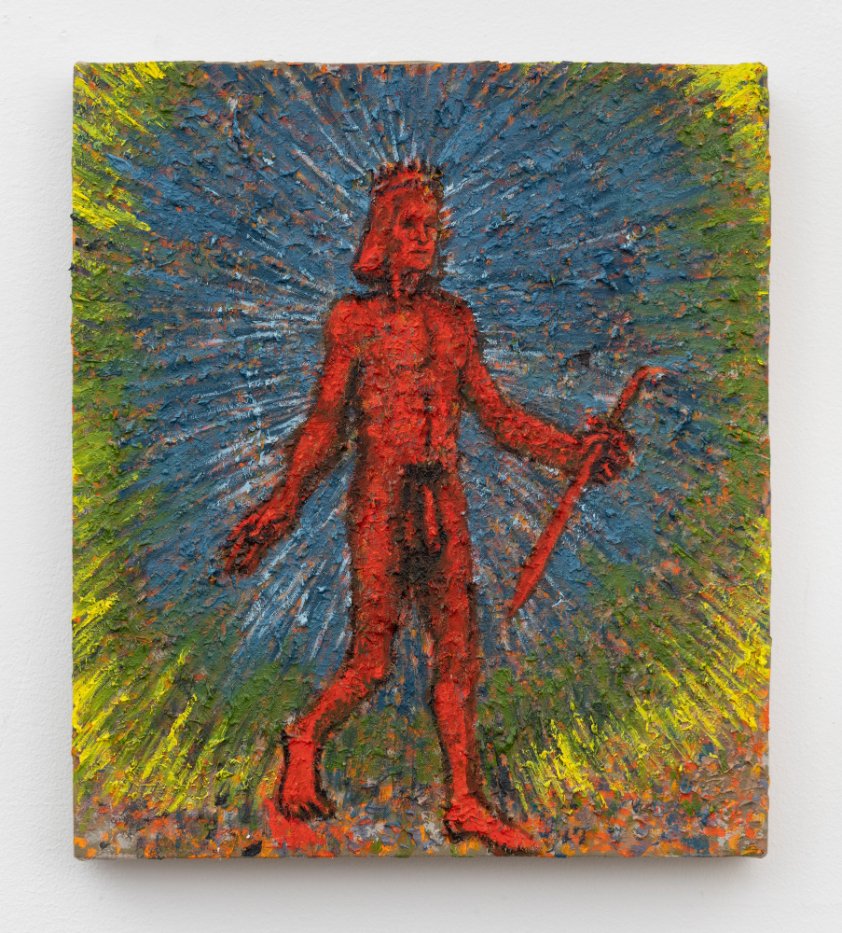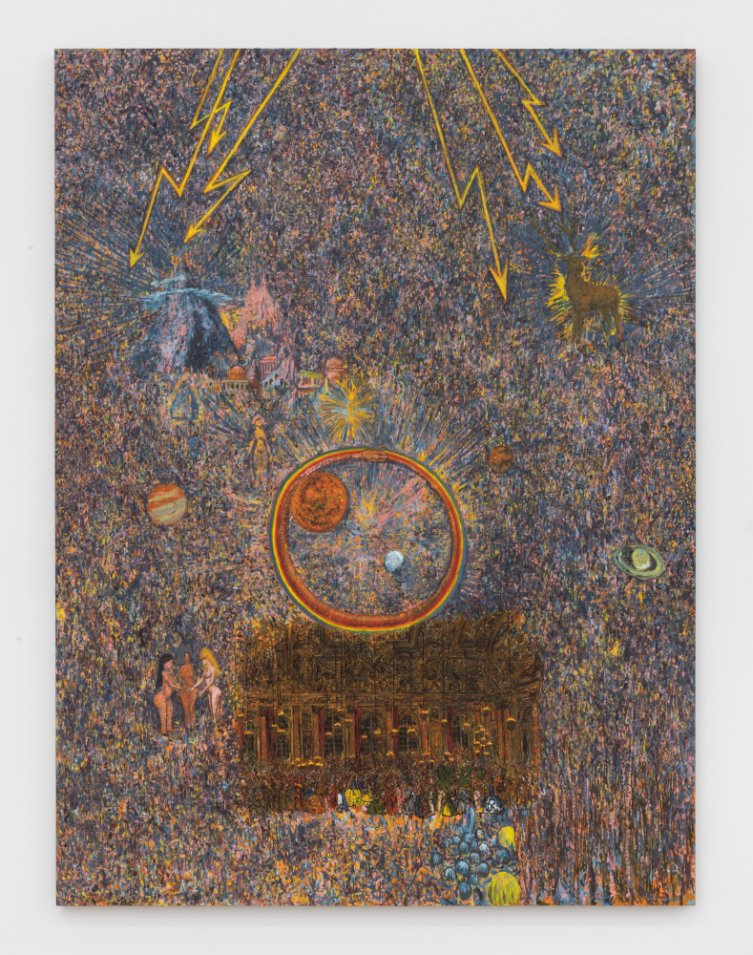Resounding, Variegated, Leaves, an exhibition featuring works by Fabienne Lasserre, Annie Pendergrast, and Lily Ramírez, brings together three artists who work along distinctly different wavelengths, yet come together as they embrace the natural phenomena of listening, touching, breathing, and looking as it occurs through an exchange between artist and art object. A primordial hum, the aural topography of a cave, a protrusion juts out from the painted surface, an atmospheric aura emanates from a flower.
The multiple postures of Lasserre’s hanging, standing, and leaning ear-like forms project an ongoing moment of repose, surreptitiously confronting the architecture or spectator as they quietly teeter along the tightly wound wire between invitation and revolt. A subtle dissonance pervades from the interaction between the knobby, hand-wrought linen membranes covered in thick paint and the industrial sheen of the vinyl lens at the center of each object.
Annie Pendergrast’s paintings channel the deep-rooted, unrelenting frequencies of natural organisms thriving in the face of air pollutants, radioactive soil, and bioengineering. A palpable heat emanates from the electric hues of flashe, as the paint bubbles up slightly to the surface. Striated bands of color insistently reverberate across each arrangement, buzzing with energy and the possibility for plant systems to reclaim control of the earth through their healing properties and the potential for bioremediation.
A dense cacophony of accumulated marks maps the terrain of Lily Ramírez’s heavily impastoed paintings—acting simultaneously as a direct trace of the artist’s presence and also an aggregate record of her lived experience and memory. On a cellular level, Ramírez’s gestures evoke chromosomal strands vying to shape the proverbial DNA of each painting; while on a macro level, they convey pathways of movement woven across the artist's native city of Los Angeles or other expansive swaths of land.
To privilege tactility and aurality is to thwart the relentless stream of images flooding visual culture. In this way, the works in this exhibition foreground the primacy of a multisensorial encounter that demands the physical presence of a spectator. While the artworks themselves don’t explicitly make sound or ask to be touched, the artists have imbued their work with a methodology that filters the act of seeing through a form of deep listening and touching, as much as looking, at the natural world.
Resounding, Variegated, Leaves is on view through August 11th at Mrs. 60 - 40 56th Drive Maspeth, NY

